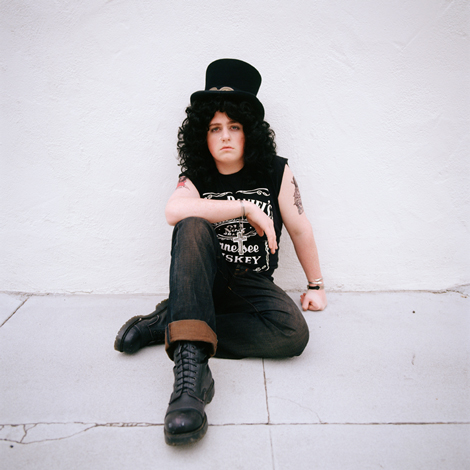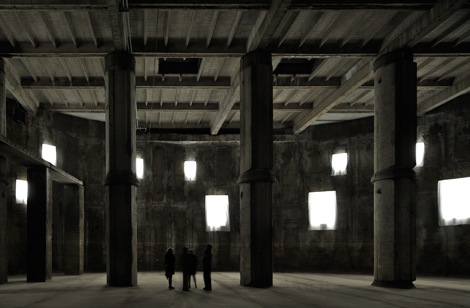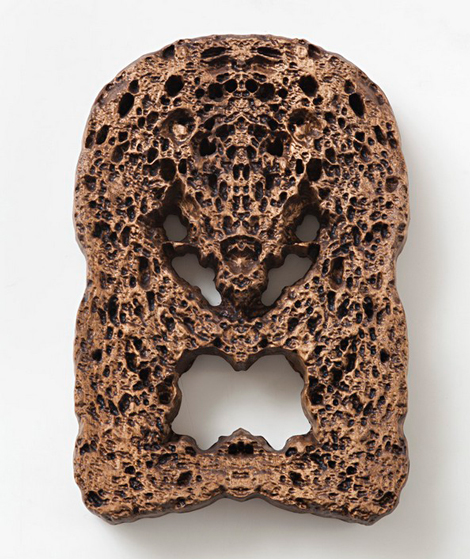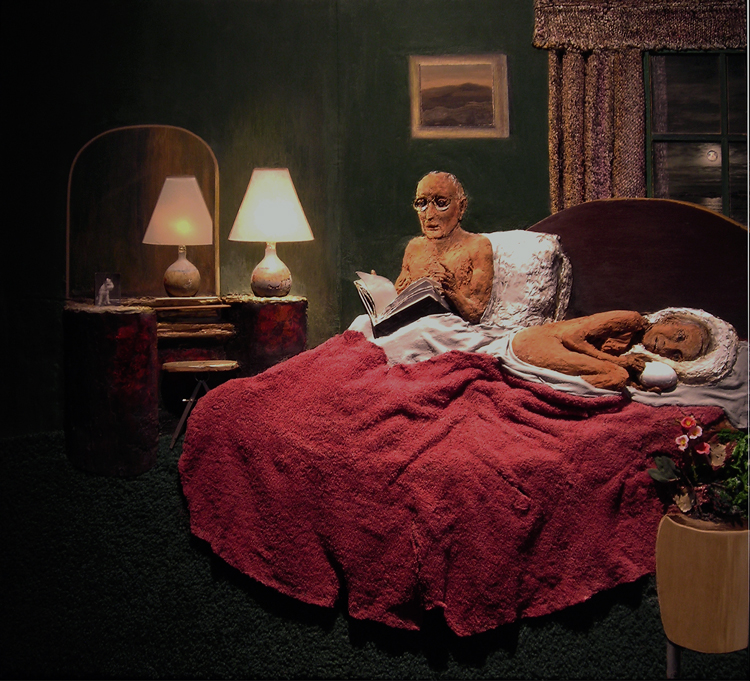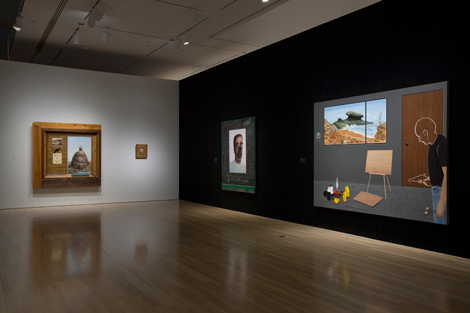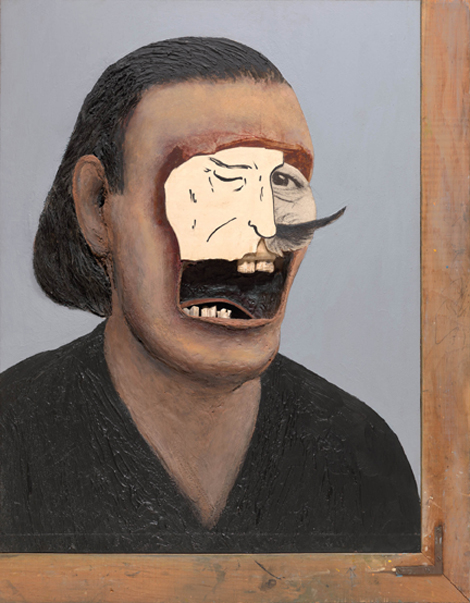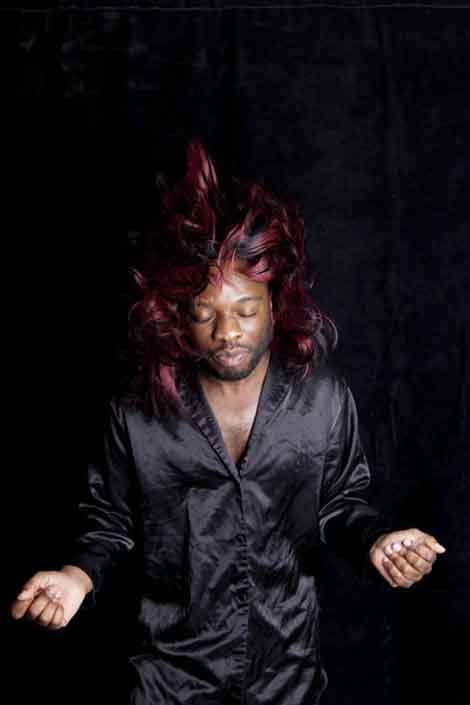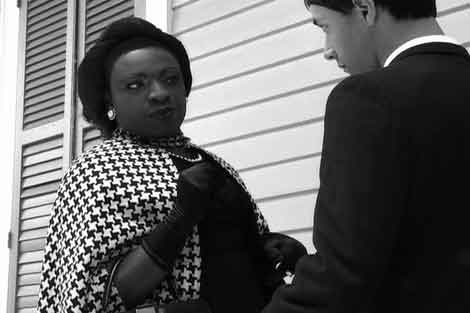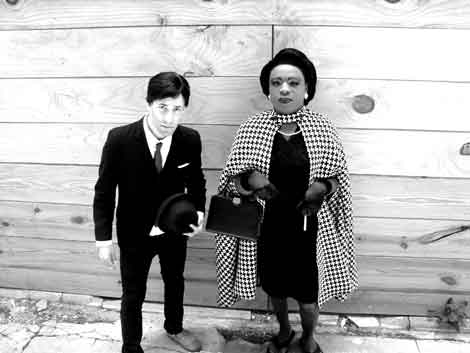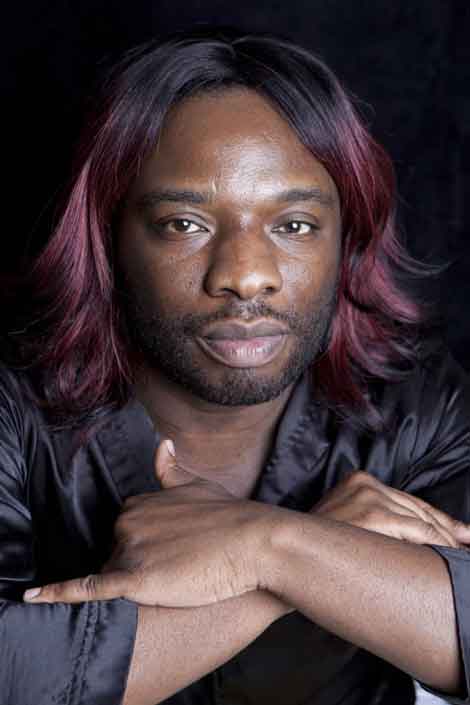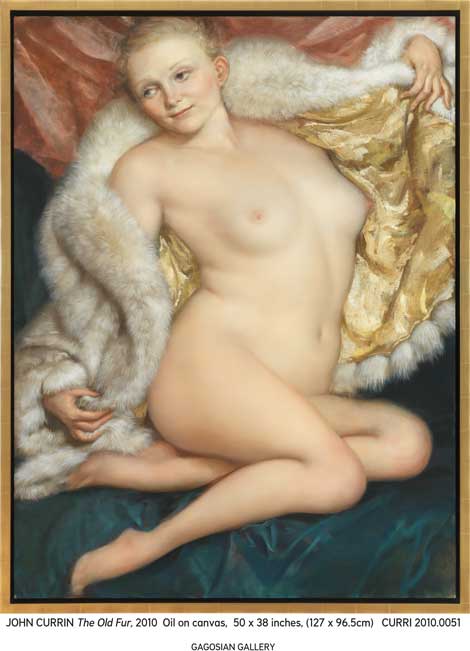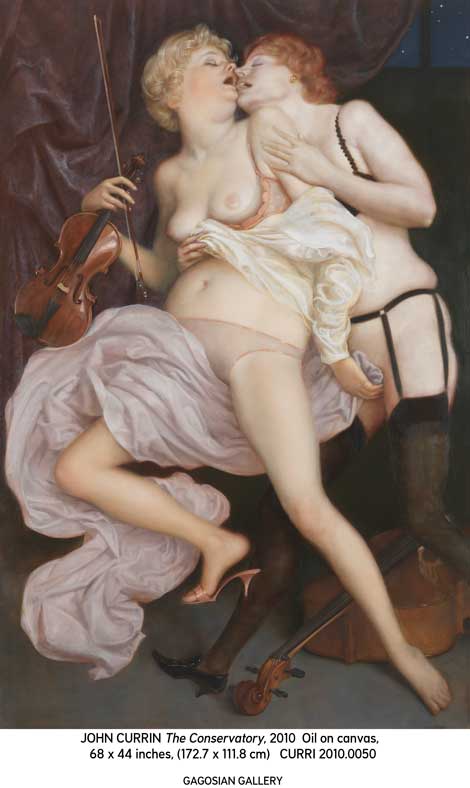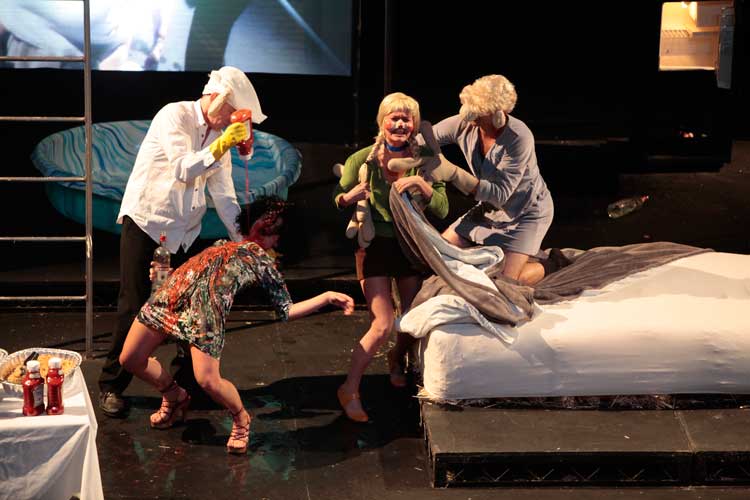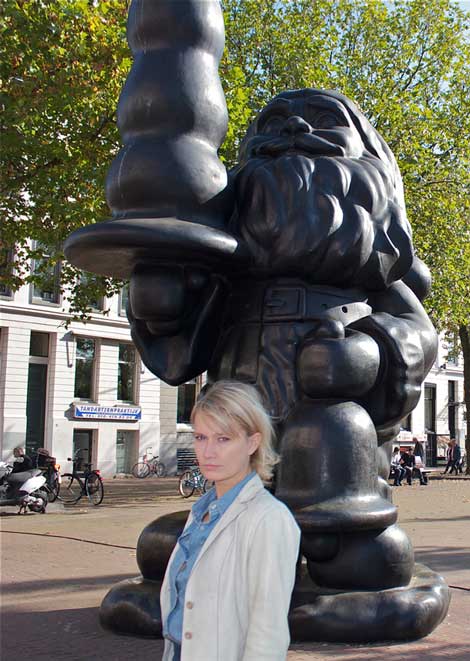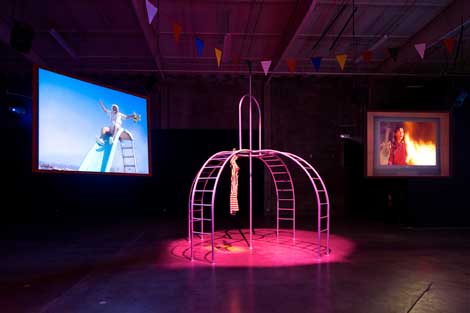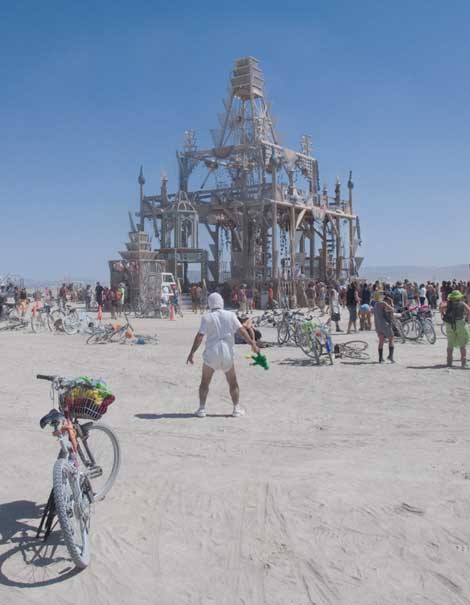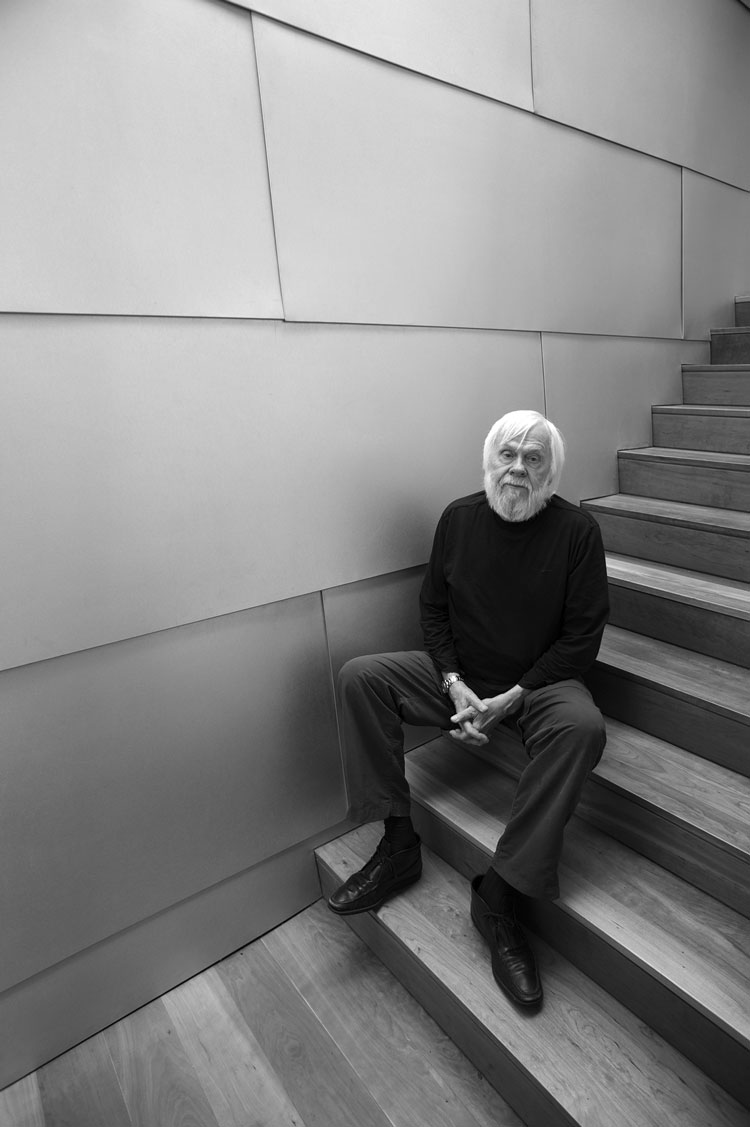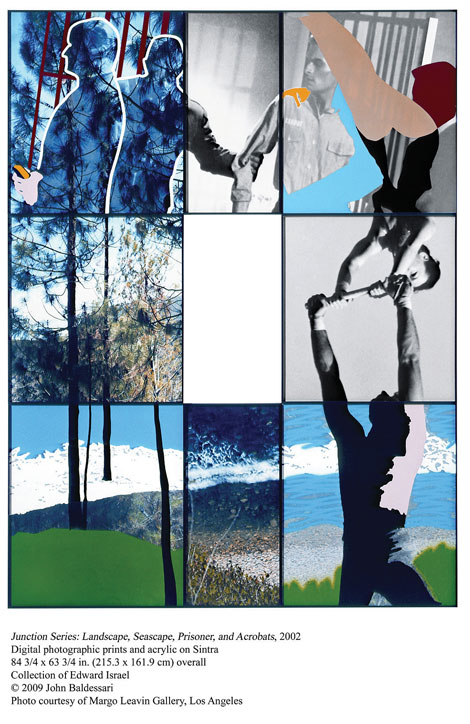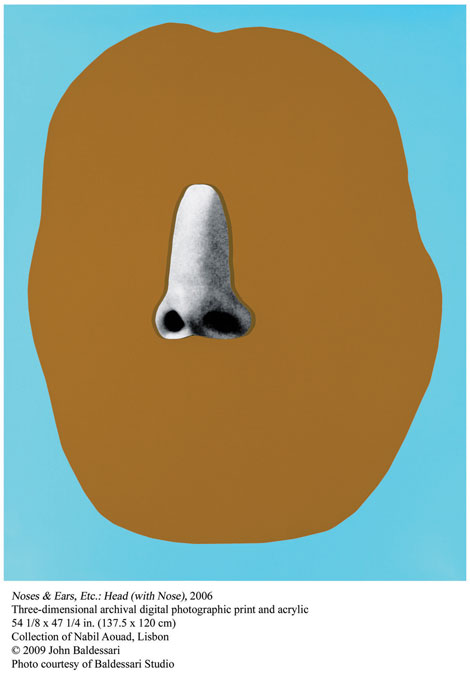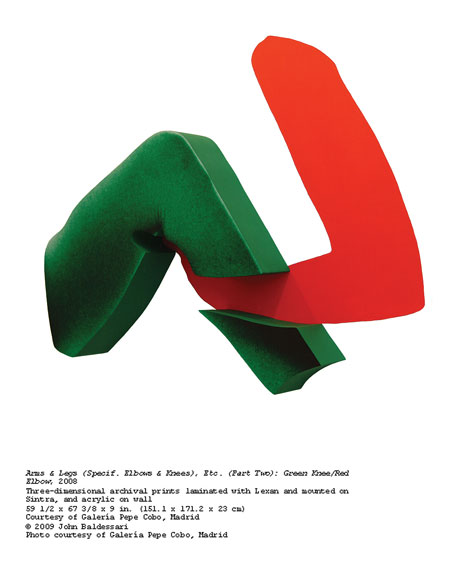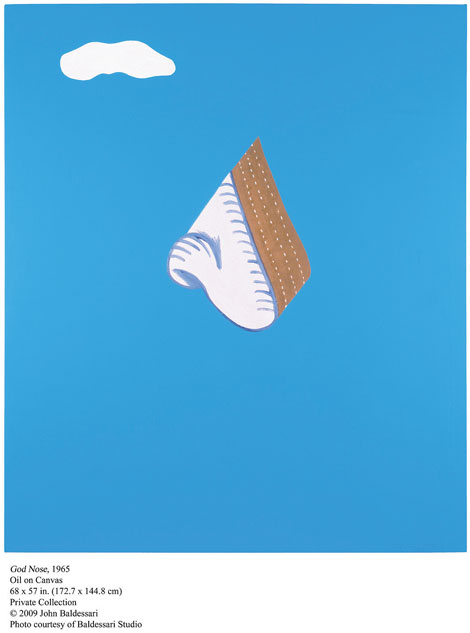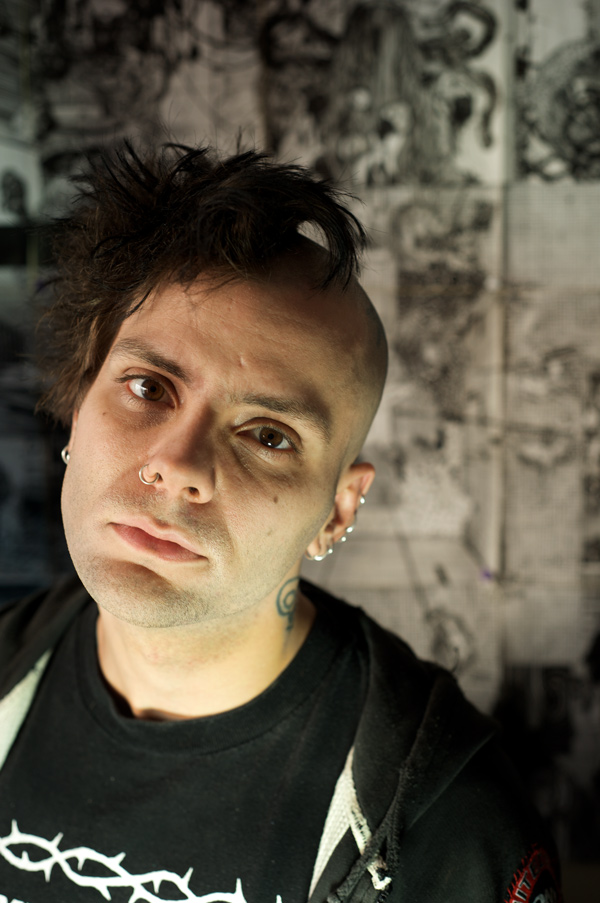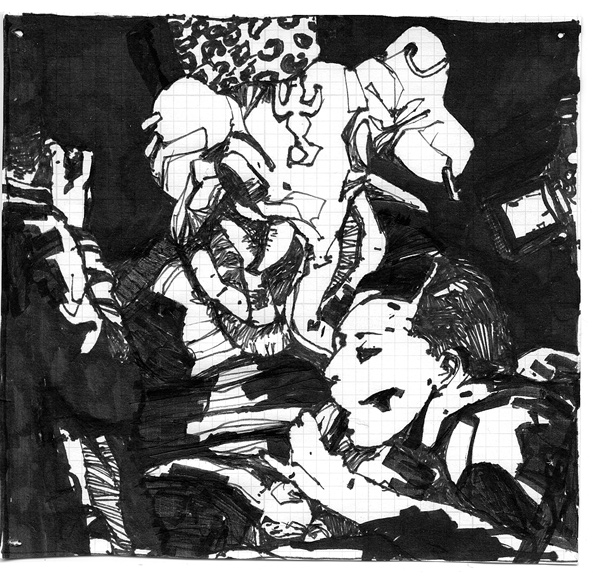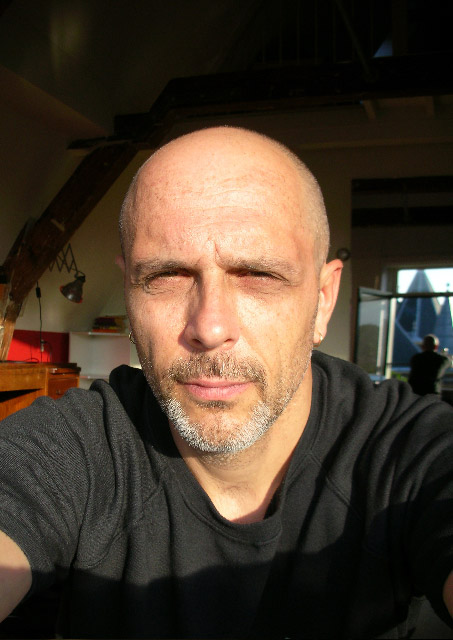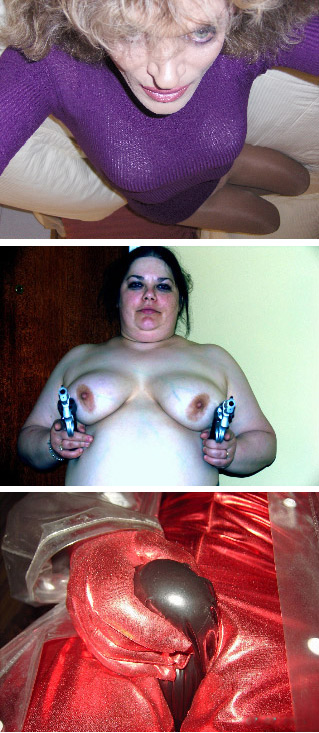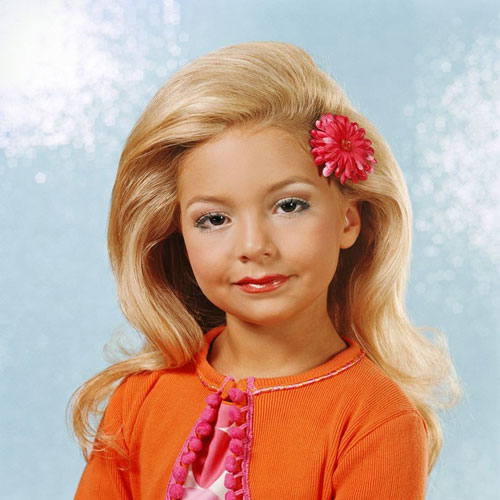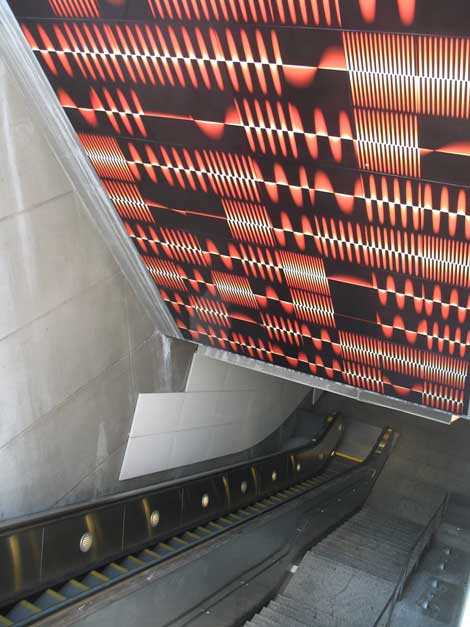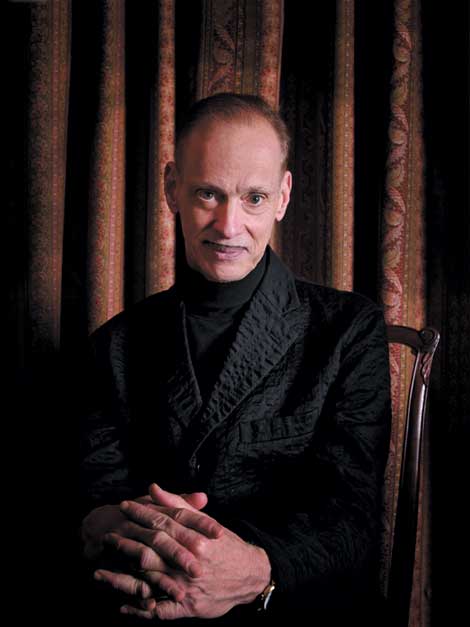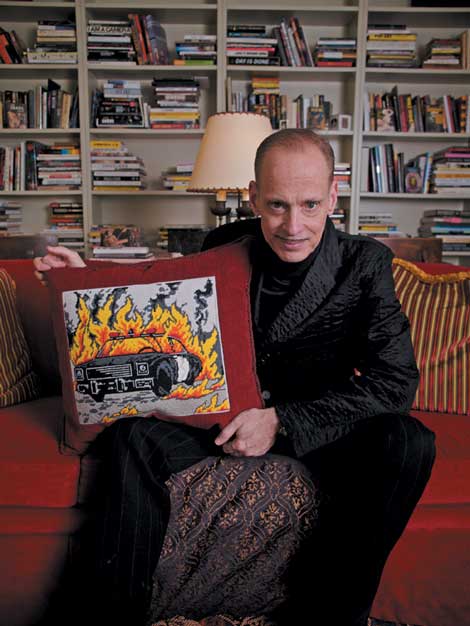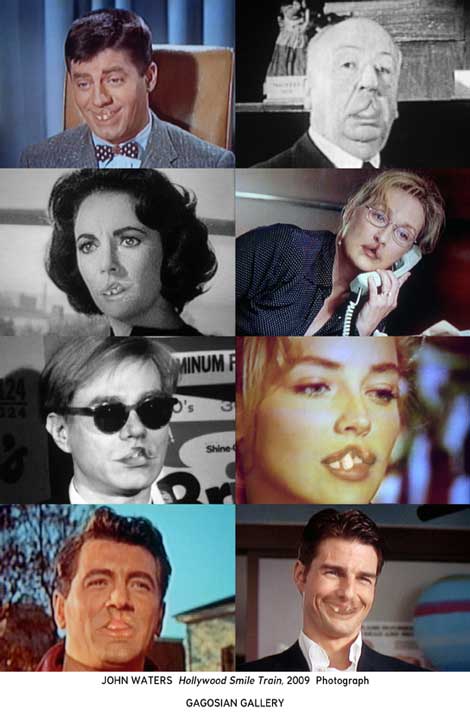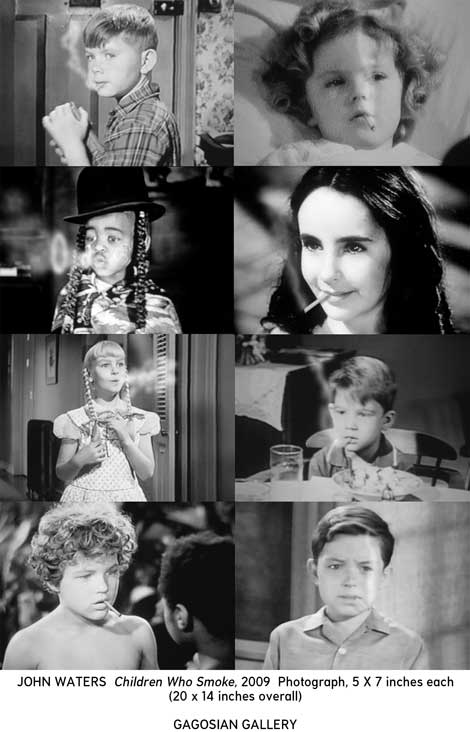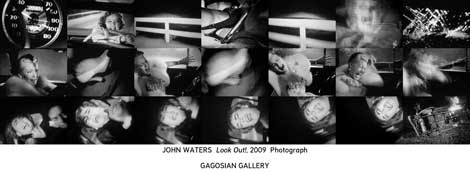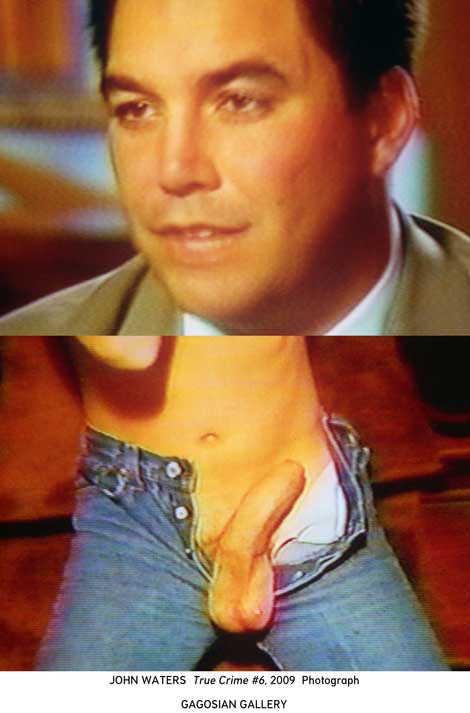Your cart is currently empty!
Category: features
-

LAURA LONDON
Laura London often channels celebrities through her photography, but not necessarily in ways that you’d expect. She doesn’t document musicians, models or actors onstage or off, or portray them in surreal situations like say, Annie Liebovitz does. Instead, she asks teens and young adults she knows to perform for the camera. By photographing them preening and vamping as an exploration of idealized identity, London’s images become about the nature of culturally indoctrinated emulation.

Laura London, Rock Star Moment 2, 2000, Courtesy Laura London In one of her images from “Rock Star Moment,” a series from 2000, a teen faces the camera with attitude, a guitar hung at her waist. Decked out in baby-doll dress and platinum wig, with black nail polish and smeary lipstick, the girl passes as a juvenile version of Courtney Love. In another picture the girl is dressed in black, leaning over a bathroom sink. Her mirrored reflection reveals a face masked with dark eyeliner and blood-red lipstick, her expression feigning Trent Reznor’s creepy living-dead look. Those two photographs suggest how London approaches her young subjects; that collaboration is a necessary component, even if it is left ambiguous as to whose imagination (the photographer’s or the model’s) is really being tapped.
“Once Upon a Time… ” is London’s most recent and ambitious series, begun in 2007 and periodically updated. Like her earlier work, it involves collaboration with young actors and a reliance on imagination. But the concept for the series was sparked by memories from a real situation. Rose, the charismatic singer of Guns N’ Roses, was a neighbor of London’s in 1990. One only had to stand in line at the supermarket to know about his on-and-off relationship with his then-wife, Erin Everly. Rose was often in the news for volatile behavior, and word in the neighborhood was that he argued with his wife and painted graffiti on their garage door. London took a photo of the garage door and Garage Text, 2010, is the result. (The spray-paint scrawl even referenced “Sweet Child O’ Mine,” a famous GNR song he wrote, inspired by Everly.)
London never intended to publish anything from the roll of film she shot that day, and put it away. About two decades later, it became the catalyst for this new body of work. Most pictures from the series are invented scenes, for which she hired a crew to help: actors, a makeup artist, and an artist to paint the many fake tattoos. Whether a male or female model stands in as “Axl,” he/she becomes the androgynous sex symbol Rose was in his youth: slim and muscular, with long blond hair, pale skin, pouty lips and mournful eyes. Often, the actor is dressed in a sleeveless white T-shirt to show off tattooed arms, and of course the trademark red bandanna across the forehead.

Laura London, Once Upon A Time 6, 2010, Courtesy Laura London In Once Upon A Time 6 (2010) London’s model actually posed across the street from Everly’s house, in front of the bushes where rumor held that Rose had thrown his wife’s wedding ring. Neighbors told London they saw him later in the same spot with a metal detector. In the photograph, the actor is wearing a long black coat embellished with colorful embroidery, heavy boots, a black hat, and long blond wig, his face obscured from view. The image resembles a fashion shot, but is infused with reference to an anecdotal occurrence. It is neither pure fact nor exclusively fiction.
In Once Upon A Time 1 (2009) London’s nephew projects a calm and in-control performer, charismatic and sexy. He’s a pretty boy with a bad-boy aura, his arms covered in tattoos of girls and crosses, dressed in a Mickey Mouse T-shirt and bandanna as head-scarf. The nephew has the young Axl’s delicate complexion, but not the buff physique, which adds a level of humor. So do the painted-on eyebrows and tattoos and the actor’s melodramatic expression. In other photographs, “Axl” poses with “Erin.” In True Love Tattoo (2010) “Erin” stands alone with her bare back to the viewer. Her long, wavy, honey-brown hair is seductively wrapped around her neck to reveal a tattoo with roses, birds, hearts and the message “true love.” (Rose’s real-life relationships were tumultuous, with legal accusations of assault and battery from not just Everly, but Rose’s subsequent main squeeze, supermodel Stephanie Seymour.)

Once Upon A Time 5, 2009, Courtesy Laura London “Axl” comes with an entourage of not just ex-girlfriends but ex-bandmates. Another of London’s nephews poses as guitarist Slash, in a wig of long black curly hair and a Jack Daniels Whiskey T-shirt. He looks fey, with makeup and jewelry, in spite of the signature top hat, sunglasses, tattoos and heavy boots. In still more pictures, some black and white rather than color, “Axl” and “Slash” are joined by other members of GNR’s original lineup, circa the celebrated 1987 album Appetite for Destruction. The models’ performed demeanors add an air of all-out ridiculousness in the vein of This is Spinal Tap.

Laura London, Once Upon A Time 9, 2009, Courtesy Laura London In Once Upon A Time 9 (2010) a bare-chested and jean-clad “Axl” looks like a drag queen in a disheveled wig, with heavy painted eyebrows and pink lips. He hugs himself and feigns angst. Another example of gender-bending as a comedic play on androgyny is London’s inspiration to have a female model pose as the protagonist. London’s young intern becomes “Portrait 1” and two images—one of her in cowboy boots on a carpet and the other looking like the real-life young woman she is, seated on a stool—seem a perfect pair to convey the contrast between reality and acting and play it for humor.
The melodrama that London’s models project as deadpan and earnest brings to mind reality TV. Think of The Osbournes. And if you consider that the deliberate blurring of fact and fiction may be our updated version of the long tradition of documentary photography, reality TV is a good parallel. London’s photographs are about the nature of “seeing” in our now over-exposed society. With a 24/7 media environment dominating real life, truth and fiction become fused—an ironic condition for a medium that traditionally kept those realms separate.

Laura London, Salon Style Wall 2, Group Portrait 2, 2000, Courtesy Laura London. -

THE POETS HOUSE
A quivering grid of afternoon sunlight shifts across the polished hardwood floor of a long narrow room. But for the drowsy hum of the air conditioner, all is silence and stillness, an ambience ideally conducive to the reception and refinement of clear thought. Immersed in scholarly retreat, an owlish old man with a malodorous rucksack occupies an armchair. Students stretch out on sofas; others sit at desks that border the room, pecking at laptops or scribbling in notebooks. A display of books by the greats—Milton, Herbert, Dickinson, Eliot—line the window ledges like poetic ramparts against the world outside, where crowds flock Battery Park and ferries traverse the glittering Hudson toward the skyline of Jersey City beyond.
It is unusual to find this many people (today, at least 10) gathered in silent contemplation of the written word. The Poets House is not a library—books can only be perused on-site —but it is laid out like one, and unlike most libraries nowadays, which often seem more like video arcades or children’s playgrounds, this one has only one public computer on the premises, for accessing the data base—strictly no Internet use, as I found out when rebuked by an intern for browsing a horse-racing site. The Poets House, naturally, houses only poetry, that most ignored and impractical of the arts: more than 50,000 volumes of it, and growing.
It is difficult to get the news from poems, yet men die miserably every day for lack of what is found there.
—William Carlos WilliamsWith weighty biographies and critical studies thrown in, Blake, Whitman, Stevens and other prolific heavy-hitters take up one or two shelves on their own. Less predictably—with Kleist above and Koch below—the works of Bill Knott occupy almost an entire row, the black lettering on many of the thick white spines shamelessly flaunting the Lulu imprint. The open-door policy results in a preponderance of self-published books. Aisles of obscurity, shelves of neglect, florilegiums of futility, all meticulously alphabetized: a repository of poets who thought their thoughts worth recording, their words worth sharing.
“So many had sacrificed themselves for art without even their names surviving. On the other hand, what mattered most was that all who had given themselves to their work had their real reward in having actualized themselves.” Easy enough for John Berryman to say, considering his place in the pantheon, but perhaps not particularly comforting to poets whose efforts at self-actualization have never advanced beyond open mic nights in empty coffee houses and years on end of polite rejection from little magazines that almost nobody reads.I open the Collected Poems of Tim Dlugos at a random page: “Attacked by people I admire/as a poseur, or knave, or liar/perceived as dry, or shrill, or bored/or (worst of all) roundly ignored.” Which seems to sum up the poet’s lot. Resentment or indifference are the usual reward for crafting felicitous lines, and—it goes without saying—a complete lack of remuneration that is accepted as an essential and unavoidable element of the poetic occupation.
As any unknown poet will tell you, modern poetry is a nepotistic arena in which success is entirely dependent upon who you know. There is no “supply meets demand” dynamic such as exists with music and art, where middlemen are perpetually scurrying around in order to satisfy the appetites of an ever-increasing audience hungry for whatever’s thrown at them. Because there isn’t much of an audience, it follows that there is no universally recognized criterion of quality, so it’s easy to perpetuate a closed-world incestuousness determined by critical and academic preciosity. Modern poetry, like modern art, is often prized according to its obscurity (to produce work that is direct and accessible is to render it inaccessible to critics: it leaves them with nothing to do and could put them out of business if allowed to flourish), and innocent readers sometimes wonder why it needs to be interpreted rather than experienced.
I, too, dislike it: Reading it, however, with a perfect contempt for it, one discovers in it, after all, a place for the genuine.
—Marianne MooreThe musing silence is occasionally broken by a book cart wheeling along the floor or the tapping of footsteps as a librarian walks by, smiling graciously at the visitors. On a neighboring sofa, a woman with dark, soulful eyes smiles mysteriously to herself. I try to read the title of the book that has provoked such a seductive reaction but it’s concealed by the back of her luminously-veined hand.
The spines of many of these volumes bespeak sad lives dedicated to a difficult and often masochistic pursuit. An original volume of Frank Stanford’s Crib Death published by Lost Roads and signed by C.D. Wright—with whom Stanford had an affair that precipitated his suicide—has a sacred, haunting quality. As does much of his work: the title of one poem, “Death on a Cool Evening,” is richly resonant in light of his chosen end.
Further along, the fecundity of the Ts is noticeable—more tragic poets—in particular, the Thomases: Dylan, Edward and R.S. Then there’s Francis Thompson, author of “The Hound of Heaven,” while strangely conspicuous by its absence is James Thomson’s “City of Dreadful Night.” Presumably it hasn’t been donated yet.
Poetry is language. And nowadays language isn’t greatly valued as a form of communication. In which respect the Poets House is a last redoubt, closed off from the city’s tumult: a place where the old verities are upheld, where poetry feels important and words can breathe.
Language is free. Take generously.
Poets House, 10 River Terrace, New York, NY 10282, 212.431.7920, ext. 2818, www.poetshouse.org
Perusing the library, Photo Courtesy of Mark Woods.
-

Prizes and Politics
Nights CAN BE long in Moscow. But come spring, as the light fades ever more slowly, the evenings get off to a late start. Which may be why I inadvertently kept a driver waiting on the evening of April 3rd to ferry me and another journalist to the sprawling Artplay Design Center in the Kurskaya district of Moscow for the Seventh Annual Innovation Prize award ceremonies. In lieu of the press preview of Prize nominees which had begun while I was still en route, the two of us had taken a leisurely stroll around the Arbat neighborhood, where we were staying, and visited the from-the-ground-up replica Cathedral of Christ the Redeemer—as much a symbol of Russian redemption from Stalinism as religious resurgence.
Artplay, one of several industrial facilities in Moscow to be reconfigured into an “art cluster,” is an exhibition facility fit for a megalopolis. On a multiple–football field–length expanse of its mezzanine level is what seems like half the Moscow art world, along with a phalanx of media from Russian outlets to Bloomberg, the Wall Street Journal and the Financial Times.
One of the first people I’m introduced to is a gaunt, cerebral-looking gentleman, who turns out to be Alexander Brodsky. His “Cisterna” has been nominated for (and ends up winning) the Innovation Prize for Best Work of Visual Art. But the moment is almost completely lost on me, his identity blurred in the cacophony of the moment, as I try to distinguish him from the Alexander Borovsky (of the State Russian Museum in St. Petersburg), who’s one of the jurors, and Alexander Gronsky, a photographer who’s been nominated for the Innovation “New Generation” Prize. It’s not for two or three days, not long after I’ve seen the documentation for the dramatic “Cisterna” installation, that I finally realize Brodsky may be one of the few contemporary Russian artists I’ve encountered off Russian soil. His work has not only been exhibited in New York (and elsewhere) since the 1990s; he actually lived in New York between 1996 and 1999 and was included in the Guggenheim’s huge “Russia!” survey of 2005.
For the moment, though, there are curators, collectors, museum officials, gallery directors, other media folks and a smattering of the award nominees who I’m trying (in vain) to correlate to the categories they’re nominated in. Standing like a beacon in this scrum is the Innovation Prize director, Christina Steinbrecher, resplendent in a long acid-chartreuse dress, whose success as the director of Moscow’s Central House of Artists and art director of the ArtMoscow fair, and more specifically, in negotiating the divergent political currents in the Russian art world generally, doubtless played into her appointment to the position. Politics have played no small role in both major Russian art prizes—the Kandinsky, sponsored by the ArtChronika Cultural Foundation, the philanthropic arm of ArtChronika, Russia’s dominant art publication; and the Innovation Prizes, sponsored by the National Center for Contemporary Art, which maintains branches in St. Petersburg and the Urals as well as Moscow.
If there was any thought that the state-supported NCCA might be reticent to unleash the politically unorthodox, the 2005 debut of the Innovation Prizes put that fear to rest. Both the Kandinsky and Innovation Prizes have gone to politically controversial nominees. The 2008 Kandinsky Prize winner, Aleksey Belyaev-Gintovt, was critically assailed for the neo-Stalinist aesthetic of his plainly nationalistic “Daughter Russia.” Last year’s Innovation Prize for the Best Work of Visual Art went to the firebrand art collective Voina (War) for one of its most spectacular protest gestures—a 65-meter length graffiti phallus painted on the underside of a drawbridge that crossed directly to the St. Petersburg headquarters of the FSB (formerly, KGB). One of the collective members, Alexei Plutser-Sarno publicly scorned the nomination as a co-optation—all of a piece with the controversy that swirls around these contests. A cursory scan of response by nominees and winners of these prizes makes it clear that biting the hands that feed us is the default posture for the artist who suffers to be recognized.

Alexander Brodsky’s “Cisterna,” 2011, which won the Innovation Prize for Best Work of Visual Art. Still, it was hard to escape the sense that Innovation’s nominating committee had taken a step back from political outrage. In a conversation not long before the jury convened to decide upon the final awards, Steinbrecher herself took note of the public ambivalence and conflicting attitudes that colored the political backdrop.
In the meantime, another art (or, as self-described, “feminist punk/rock”) street performance collective, Pussy Riot, was responding to this ambivalence in its chosen fashion—with a guerilla performance staged in that aforementioned symbol of resurgent and conflicting Russian aspirations, the Church of Christ the Redeemer, provoking the two-fold wrath of Moscow’s law enforcement and the Orthodox Patriarch of Moscow. Three members of the band were detained and still jailed on the evening of the Innovation awards. (They remain in jail—an international cause célèbre.)
The elaborately staged Innovation Awards were televised with the Aidan Gallery’s own Aidan Salakhova and Moscow publisher Philipp Dzaydko hosting the telecast. Only days later I learned that Salakhova would be closing her gallery in the Winzavod gallery complex to focus on her own studio practice, which seemed to fit a certain economic/behavioral pattern in the evolving Moscow art world. Open big (preferably in a landmark industrial space), close quietly/suddenly, and reappear as something else, maybe even somewhere else.
Winzavod is not very far from Artplay, but seems worlds apart from its retro-futurist aspect. Winzavod is a vast 19th-century winery transformed into a complex of gallery/exhibition, performance and studio spaces, architectural and design offices, including an attractive café and retail space. But the approach from the Kursky train station retains a certain grittiness—traversing a motley assemblage of fast food joints and novelty hawkers, and finally an underpass that features amazing graffiti. Depending upon what’s being exhibited at the galleries, the street art, some of it in all probability by Moscow’s most famous street artist, Misha Most, may be the highlight of the excursion. Although Elena Panteleeva, Winzavod’s director, wasn’t specific about gallery comings and goings, it was clear by the time I left Moscow that the commercial gallery rentals at Winzavod were just half of what they had been only two years earlier.
Winzavod’s nominee for Innovation’s hotly contested “New Generation” award (co-sponsored by the Stella Art Foundation) had been Valery Chtak, an artist represented by the complex’s Paperworks Gallery.
But when the smoke cleared we learned that the award would go to Louise Brooks–bobbed Taus Makhacheva, for her video installation, “The Fast and the Furious.” (Alexander Gronsky took home a special British Council award for his photographic series, “Pastoral.”)Makhacheva’s work might be called conceptual—but “The Fast and the Furious” is also very personal. It took Makhacheva back to her family’s ancestral roots in Dagestan, a semi-autonomous region of the Caucasus with a distinctly macho (and car) culture, and involved a bit of performance on the artist’s part. A week later, Makhacheva opened another, even more controversial, multi-channel video installation drawing on the aggressive alpha-male culture of Dagestan—this one documenting dog fights and their participants in tandem with documentary footage of a freestyle wrestling champion—at the Paperworks Gallery.
Upon entering the discreet quarters of the Stella Art Foundation one could be forgiven for hearing echoes of that open-close rhythm of Moscow’s commercial art world. Its gallery was featuring an exhibition of painted fans by Andrei Fillipov, that opened and closed explosively as painted light fixtures went on and off directly behind them. Unlike many “oligarchettes” who have pursued their art collecting ambitions abroad—among the blue-chip international brands at auctions in London and New York—Stella Kesaeva has kept her focus on Russia.
Which is not to say that Kesaeva has entirely ignored the international art world. When I sit down to chat with Nikolai Molok, the Stella Foundation’s development director, I do so in full view of a large portrait of Kesaeva by Alex Katz, with a Damien Hirst dot painting on the opposite wall and a Koons balloon dog off to one side. Molok emphasized that the core mission of the Stella Foundation was to support the Moscow Conceptualists. Beyond that, the foundation sought out artists from every region, including the former Soviet republics, to showcase on and off the foundation premises.

Anatoly Osmolovsky’s “Bread” series, 2012 The ever-expanding scope of the Stella Foundation’s activities would lead one to believe that it would soon outgrow its quiet location; and indeed Kesaeva and her foundation have ambitions for a full-blown contemporary art museum—a joint public-private venture to be housed in a former bus garage designed by Konstantin Melnikov—not to be confused with the Garage complex (designed by the same architect) Moscow-London-LA art-fashion oligarchette Dasha Zhukova recently closed, and reportedly intends to reopen.
If it seemed to some that the Innovation ceremony wrapped anticlimactically, it probably had less to do with the nominees’ distance from political gesture or controversy than a sense that a good deal of the recognition memorialized by the awards—especially Brodsky’s— was overdue. A special award was given to Zurab Tsereteli, a sculptor and philanthropist, “for the support of Russian contemporary art.” Not until later that week would I learn what an understatement that was.
I did not see Brodsky or Tsereteli at the sumptuous after-party, but it seemed as if every other important Moscow museum or cultural commissar was there, from the NCCA’s Mikhail Mindlin, who had appointed Steinbrecher to oversee the Innovation awards, to Olga Sviblova, the prodigiously energetic founding director of Moscow’s Multimedia Art Museum.
“It’s said that she never sleeps,” painter, curator, writer and critic Maria Naimushina, says to me the following week, in husband Oleg Tyrkin’s studio, not far from the Petrovka branch of the Museum of Modern Art. Judging from the extent of her museum activities—with the Moscow Photography Biennale in full swing, MMAM shows filled both its Arbat flagship and the Central Exhibition Hall Manege near the Kremlin—it seemed entirely conceivable. At the Central Exhibition Hall, I encountered another expert—Matthew Stephenson, then director of Christie’s Russia. Although Stephenson’s role frequently involved connecting Moscow’s collectors with the international “brand” names that dominate the auction markets in London and New York, not unlike Kesaeva’s advisors, he is broadly informed on virtually the entire scope of collecting activities in Moscow and elsewhere in Russia, including Russian artists of almost every practice and degree of prominence—and many of the anonymous “Nonconformists” who preceded them.
It came as no surprise to later discover that Stephenson had a small but choice collection of Russian artists. Unlike Brodsky, Komar, Kabakov, et al., their names were unfamiliar to me. But their significance, even brilliance, was immediately manifest. It would be hard not to be struck by, for example, one of Vitaly Pushnitsky’s lightboxes of the early 2000s. They have a Cornell quality about them crossed with something equal parts Starn Twins and Jack Goldstein. Or Olga Chernysheva’s “On Duty” series of 2007. Is it remotely possible to regard anyone as “faceless” after looking at these photographs? Issues of materiality and fungibility are interwoven with the spiritual and sacral in Kandinsky Prize–winner Anatoly Osmolovsky’s “Bread” series.
Although Osmolovsky and a number of his peers have achieved some degree of local, national and even international recognition, there are scores who remain unknown. Hence the top-down push by the commissars of the public and private spheres to find, encourage, reward and sustain the best, most innovative talent. Yet connecting the talent, innovation and ideas with an audience of informed enthusiasts, collectors, and the culture at large remains challenging, particularly in economically challenged conditions.
Spotting Zurab Tsereteli’s son, Wassily, in a restaurant at the Petrovka branch of Museum of Modern Art—the museum his father founded and funded—Naimushina seemed to imply that Tsereteli’s ever expansive and relentless social networking might be usefully applied to a communications and distribution system that frequently ignores the middle- class “aspirational” collector that needs to be drawn into Russia’s evolving art market. Connecting a distracted and disconnected public with an avant-garde associated with places like Winzavod might be difficult when “99% come from yards like that.”
“How do you identify who the innovators are, who is truly innovative, among a small circle of emerging artists,” Stephenson asked rhetorically. “But there were a lot of young, up-and-coming artists there [at the Innovation awards ceremony]. It gives them something to aim for. Everyone connected with the art world was there: the NCCA, the stakeholders, media artists, aspirational collectors, people in business. The owners of these new businesses want to be seen. It’s a new element in society.”
This was something you could see people coming to grips with in Moscow—both in the art and on the street: the redefinition of a society and its aspirations. Scarred by war and starved for three generations, Russian artists who could once scarcely breathe their aspirations for fear of censure seem to want to inhale the sky. Yet juxtaposed with the immensity of this ambition is the Moscow still reclaiming, rehabilitating and renovating its past. It has taken a generation to move past a degree of cynicism and mistrust that would have once constrained (if not crushed) such scope and ambition. While distanced from current political controversy, Brodsky’s award for “Cisterna” seemed an appropriate summation, invoking the “invisible cities” contained within the “Big City”—the imaginary, aspirational city that precedes and succeeds the built city absorbing it all; and portending a new “Silver Age” the aspirational Moscow may yet seize beyond its long nights.
-

Nothing to Buy
Documenta 13More than 30 venues—166 international artists within a few square miles—a forum for ideas rather than conspicuous consumption: it’s Documenta 13! Held every five years in Kassel, Germany, and founded in 1955 by Arnold Bode, an art professor and designer from Kassel, this is the world’s most important and enduring contemporary art show. Depending on the curatorial vision of the exhibition organizer(s) that shape the content, you might encounter a scolding, pedantic treatise on colonialism, or a Teutonic, oppressively intellectual “march-of-death” experience. Thanks to American-born artistic director Carolyn Christov-Bakargiev, this iteration of Documenta was accessible to nearly anyone with interest in the larger world around us, and provided conceptually rich art while also feeding the senses. The overarching theme of the mega-exhibition was “bearing witness,” with all that the phrase implies.

Museum Fridericianum, 2012, Museum Fridericianum, 2012, photo by Nils Klinger © dOCUMENTA (13) Don’t get me wrong: I love art fairs and revel in such market-driven events. But after the parties and the bright shiny happy pretty things, Documenta was the perfect antidote. Where else in the world could you see, under the same roof, one-quarter of all the ancient carved-stone “Bactrian Princesses” known to exist in the world, then go to debate the relationship between art and philosophy in a closed seminar? The exquisite Earth Goddess-like sculptures from Central Asia date back to the 2nd millennium B.C. and were borrowed from a private collection; the seminar was German philosopher Christoph Menke’s “What is Thinking? Or a Taste That Hates Itself,” held on Tuesdays from 11–1 p.m. in one of the galleries at the Fridericianum museum, the main Documenta venue. This brings a saying to mind: the French eat; the Italians make love; and the Germans think.
Among the most memorable projects was Chicago-based artist Michael Rakowitz’s installation, featuring shards from the destroyed Buddhas of Bamiyan (“All we are breaking are stones”); the burnt remains of books ravaged when the Fridericianum was bombed by the Allies in 1941, and deemed too unimportant to restore; as well as beautiful stone books symbolizing the lost volumes carved by contemporary Afghani carvers using stones quarried at Bamiyan. The emotional impact of this powerful installation was that of a body blow, as our complicity in the destruction of cultural treasures crept into conscience like a bad memory. The title of Rakowitz’s installation (What dust will rise from one horseman?) was taken from an Afghan proverb on cooperation.

Michael Rakowitz, “What Dust Will Rise?,” 2012, Commissioned and produced by Documenta 13 with the support of Dena Foundation for Contemporary Art, Paris, and Lombard Freid Projects, New York, courtesy the artist; Dena Foundation for Contemporary Art, Paris; Lombard Freid Projects, New York, photo by Roman März. At the Neue Galerie Kassel, Sanja Ivekovic’s “The Disobedient (The Revolutionaries),” 2012, was a stand-out. The Croatian artist assembled plush toy donkeys of all eras, shapes and sizes, and displayed them in a glass case, capturing the attention of hordes of German schoolchildren touring through the galleries. (Note to self: art education is alive and well in Europe!) The piece provided a great example of an artwork that is cute on the surface but has a dark underbelly: adults were absorbed by the text on the opposite wall, describing the political protestors and martyrs symbolized by each cute lil’ stuffed animal, from Anna Mae Aquash to Primo Levi—a broad international assortment of political protestors who died because they were stubborn—like donkeys are reputed to be.
Canadian artists Janet Cardiff and George Bures Miller’s wonderful sound installation “Forest (for a thousand years)” featured a recording of a choral piece sung by the Estonian Philharmonic Chamber Choir, set in a glade deep in the recesses of the landscaped Karlsaue Park. Speakers were hung in the trees surrounding the tree-trunk stool seating arranged in the center of the clearing, and if you found your way there through the mud, your reward was 25 minutes of transcendent, blissful listening to a composition by Estonian composer Arvo Pärt. Cardiff and Miller had another site-specific installation at Documenta, in Kassel’s Hauptbahnhof train station. The “Alter Bahnhof Video Walk” used augmented reality to guide audiences on an engaging walk through the station. After borrowing an iPod from an office inside the station, you were told to take a seat on a bench and wait. As you held the media player in front of you, Cardiff guided you on a walking tour through the station as various video and audio vignettes unfurled. You proceeded as directed, often wheeling around since the recorded events were both mundane and convincingly realistic—people running to catch trains, a dog barking, a baby crying. At one point, Cardiff guided viewers to one of the train platforms, the same platform where Nazis loaded victims onto cars bound for the concentration camps. At another point, Cardiff stopped the narration and “turned off” the video at the request of a mysterious man who preferred to remain incognito.
The tour ended with a duet dance performance, a wonderful chance encounter made all the more powerful by Cardiff and Miller’s playful manipulation of temporality. At Documenta 13 there was nothing to buy—just pure experience to remind you what contemporary art can be.
-

THE ROAD TO DOCUMENTA
I’ve been warned that Llyn Foulkes is preparing furiously for “Documenta 13” and as I get in touch to arrange a meeting, I’m wary, in part, due to his reputation for fractious soliloquies regarding fellow artists, critics, art magazines, and in general, the art world cliques that hold him at arm’s length. By his own account, Foulkes has been an outsider, a talented iconoclast shunned by the powers that anoint the grand artists of the day. Foulkes’ auto-scribed narrative is the continuous subtext for his meandering commentary on the art world, a surging tide of cynicism and discontent which is incongruously and entirely enmeshed with Foulkes’ innocence, and even naivety and idealism. These qualities mix in an uneasy boil beneath the surfaces of his eye-popping, sometimes disorienting tableaux, which are fueled by his encompassing world view and his obsession with politics, money, power, and his negotiation with culture in a broad sense. Foulkes’ work incorporates material derived from his personal life to the extent that figures and vignettes that loosely represent his lurking presence populate his paintings. He cannot help but put himself into his work. His vision reflects a deep suspicion of power and a sense of alienation: the individual alone, standing outside of society, editorializing on and defying the conventional wisdom.
Despite declaring himself the odd man out, this is Foulkes’ moment. Although he has shown regularly in Los Angeles since the early 1960s and has had many moments over the years, he has never been in the spotlight as much as he is now. His inclusion in the 2009 Hammer Museum show “Nine Lives: Visionary Artists From L.A.,” in his view, set him up for the Venice Biennale last year, and “Documenta 13” this year. And in 2013, Foulkes will have a retrospective at the Hammer Museum.
Llyn Foulkes, Installation view from Nine Lives: Visionary Artists from L.A., March 8 – May 31, 2009, Hammer Museum, Los Angeles. Photo: Joshua White. When I meet with Foulkes at his studio, I find him engaging and charming. He is entirely open and hungry for conversation. Given his reputation, and our somewhat uneasy initial phone contact, I am a bit surprised. Embarking on a freewheeling discussion, we sit down at his workbench. “What do you want to see?” he asks. Then, “See this?” He directs my attention to a small construction on the wall behind me. It is about 4-x-4 foot by my estimation, and as I take it in, the image begins to register to me: A woman is curled up on a bed, cradling a shiny egg-shaped object. Foulkes’ double, his pictorial incarnation, sits in bed next to her reading the paper. The funky surfaces of fabric and carpet, and Foulkes’ manipulations of space play tricks on my eyes, and the whole thing seems to quiver. Foulkes started The Awakening when he began to feel his marriage was over, and it is a painting that enjoys legendary status. It is the same piece he pulled from a show at Patricia Faure Gallery in the mid-’90s after it was up for only a week because Foulkes said, “It wasn’t done.” This is what he has been laboring over for “Documenta 13,” the 18-year painting, or thereabouts, but now it is less than half its original size. Foulkes also showed The Awakening in “Nine Lives: Visionary Artists From L.A.” at the Hammer in 2009. In the exhibition essay, Hammer curator Ali Subotnick wrote that Foulkes felt pressure to capitalize on the success generated by his work in the 1992 MOCA exhibit, “Helter Skelter: LA Art in the 1990s.” He responded to the pressure by exhibiting a painting that wasn’t resolved.
Foulkes still isn’t done with the piece. He begins to explain some of the changes he has made recently, describing how each choice creates a cascading effect, before he finally gives up in resignation, saying, “All these decisions are being made very quickly, at the end. There was a thing here before,” he indicates a place on the painting, “and you know… ah, I don’t want to get into it.”
“This painting started at nine feet. It was nine feet.” Foulkes slows his voice, drawing out the word nine. “This painting is now just this big.” And he gestures with his hands to indicate the shrinkage. “I told Documenta I would finish it,” he laughs, somewhat ruefully, “and then I started changing everything.”
Up close, I notice the eyes are Phillips head screws; the flat surface reflects light. The tapered body of the screw recedes into the intricately formed eye sockets of the figures. The screw heads cast a small shadow and create remarkable depth. Reflecting on what I had read about this piece, I comment on what I expect are fictional elements in this narrative, and Foulkes answers without hesitation, “The whole thing is fiction.” Then he shifts immediately into a discussion about engineering the piece, talking about all the changes he still needs to make. “What I’ve been trying to do for a long time,” he continues, “is to make a really dimensional painting. You never see it done so much with anything that has figures in it; it is usually done in abstract. You take a shape and you say, ‘this is bending this way; I have to curve this, that way.’ And it keeps changing.” Foulkes wants very much to be done with it, to put it, and what it represents, behind him—yet he can’t seem to let it go.
Llyn Foulkes, Dali and Me, 2006, Hammer Museum, Los Angeles Foulkes pours the kind of detailed craftsmanship into his work that some might consider the result of obsessive or stultifying perfectionism. He comments on the importance of keeping his hand in his work, saying, “I believe very much in process, because I believe that you really grow in process.” Rather than hiring assistants, he needs to contend with the work himself. “It’s easy to have somebody else make it for you,” he explains. “You change things, and things happen, and you discover things.”
Then, as though all the talk of changing his painting has made him tired, he declares, “But my machine, I don’t have to worry about that. You’ve seen the machine before?” I assure him that I have and recount the first time I saw him perform. We step into the “Church of Art,” the space adjacent to his studio where he performs. The machine, a self-contained hybrid instrument, a one-man band with drums, percussion, horns, and a bass guitar string that Foulkes plays with his feet, is lit with spots and amplified with microphones plugged into a PA system.
Foulkes tells me he’s packing the whole thing up and shipping it to Germany for “Documenta 13,” where he’ll be performing. He points out that although he’s driven it to San Francisco and all over Southern California in his van, he’s never shipped it anywhere, and that makes him nervous. “At first, I wanted to go on the cargo plane,” he says. “I wanted to be the escort so if it went down, I would go down with it. I could never recreate it!”
He has taken off his shoes and slid onto the seat, getting ready to play. I ask if the various horns and bells came from salvage yards. “They’ve been from salvage places, some were from Cost Plus.” He hits a bell lightly with his mallet and it rings with a warm sound that brightens up the space. We continue talking as Foulkes breaks into fragments of songs to expand on his answers. He seems lightened and relatively untroubled as he works the machine and sings. Clearly he enjoys this, and I wonder aloud if he feels free of his inner critic when he is playing. “I have an inner critical voice with the machine,” he responds, “it better be damn good. When it’s really rolling along, I feel every part of my body is in tune.”
Llyn Foulkes live at Church Of Art, photo by Iva Hladis ©2008 Toward the end of our conversation I note that he has expressed disappointment in various interviews over the amount of recognition he has received. I ask how much is enough. It is rhetorical, and perhaps unfair, but I ask anyway. “How much is enough?” he repeats. “Yeah, I know,” he reflects, “I do have that problem. You see, it all comes from when I was a child.” He begins playing again, building into a song. “When I was a baby, my Daddy left me; he said, ‘I’m going down to California, with a banjo on my knee.’ So I made my daddies up – from the picture shows, from the face that grows from the picture shows…” Foulkes explains that as a child he felt the only way he would be loved was to be famous. “I’ve never gotten over it. As much as I try, I still haven’t gotten over it. So you say, ‘How much is enough?’ I don’t know.”
Coming soon: “Llyn Foulkes: A Retrospective,” February 3–May 19, 2013, at the Hammer Museum, for more info: hammer.ucla.edu
Below: Llyn Foulkes, The Lost
Frontier,1997–2005, courtesy Hammer Museum, Los Angeles. -

MIKE KELLEY: STRAIGHT OUTTA DETROIT
EXTRA! EXTRA! READ ALL ABOUT IT! ART STAR STOPS MAKING ART!
That was going to be my headline after hearing the remark Mike Kelley made at the close of our interview.I was wrapping up our conversation, all ready to ask the final question, like Barbara Walters: “What’s next, Mike?” But before I could, Kelley preempted me: “I’ve been working nonstop for years and years, and now I’m not in the mood to make art. I’m trying to slow down.”
Considering he was just back from his London show with Gagosian Gallery, and that that very week his Destroy All Monsters noise/art band group show at Prism gallery in Los Angeles was being installed, maybe he was just plain worn out, and perhaps being a little melodramatic. He continued, “I have a lot of things I have to do, like a big survey show that’s coming up in 2012; it’s traveling. And some other shows that have been scheduled for a long time. I just did two shows this year, and big-scale shows. So I just want to stop for a couple of years.”
It got quiet toward the end of our interview, and if I didn’t know better, I might even say he seemed a bit melancholy that late morning. It’s true, Los Angeles-based artist Kelley has been making art for a long, long time. So to say he’s taking a break is something akin to Duchamp’s famous hiatus from making art to play professional chess.
But stop making art? I hate to break the news to him, but it’s doubtful: He’s in the Whitney Biennial (for the eighth time) this year with an ongoing project. (More on this later.) That doesn’t sound much like taking a break.
Known for his stuffed-animal sculptures and his wry text drawings, his performance art, his videos, his musical activities and his writing, Kelley is arguably one of the most influential living artists, and I’ve been wanting to feature him in Artillery for some time now.

Mike Kelley, Kandor 14, 2011, photo by Fredrik Nilsen, courtesy of Mike Kelley and Gagosian Gallery. Kelley finally agreed to an interview, but only reluctantly. Last issue, our gossip columnist got carried away, and Kelley was not happy with what he took to be gratuitous character assassination. But he honored his word and met with me anyway, and I couldn’t help but be impressed by his integrity.
Kelley invited me to meet him at his office, which is actually his former studio/home, located in Highland Park on the eastside of Los Angeles. It still has the feel of a home—it actually is a house—as you enter at the back through an alley. I opened the wooden screen door to a bright spotless kitchen with shiny green tiles. Assistants were buzzing from one room to another.
Kelley greeted me as he was hastily finishing a piece of toast, which may have served as his breakfast. Casually dressed, with short-cropped graying hair, his intense blue eyes seldom caught mine. He was gracious though, and asked me if I wanted a cup of tea as he led me to the front living room, where the curtains remained drawn. There were two modern L-shaped couches and a coffee table in the middle with one lone ashtray that looked like it hadn’t seen a cigarette in a long time. There was a large Lari Pittman on one wall, on another leaned a tall pink John McCracken, and the adjacent wall had an army-green James Hayward frosting painting hanging near the front door. He told me Hayward was an old friend to whom he would be forever indebted to for recommending him for his first teaching job in Minneapolis. This ultimately led to his professorial career of over 30 years in Southern California, where he has developed a following among students who, in turn, have perpetuated his influence in the contemporary art world.
DETROIT
Mike Kelley was raised Catholic and attended Catholic School— any Kelley aficionado knows this, as Catholicism is frequently addressed in his work. So I decided to start from the beginning. When I asked him if he ever believed in Heaven and Hell, he responded deliberately, in his deep, gravelly Detroit accent, “No. I never believed in anything.” He seemed sad when he said that, with a faraway look in his eyes. Even as a child, he said he never bought into the Catholic Church: “No. I never believed in it at all. I was stuck in it. It was pounded into me, but I wasn’t indoctrinated. I suffered because I felt that something was wrong with me. I thought I should believe, and I just couldn’t understand why I didn’t.”
Aha! There’s the Catholic guilt!
But even in the first grade, Kelley told me, he remembers thinking that religion “was a load of shit.” I envisioned a tiny kid saying “This is a load of shit!”
He grew up in a working class suburb of Detroit. His father was the head of maintenance in the local public school system, his mother a cook at the Ford Motor Company cafeteria. Kelley first knew he wanted to be an artist at age 13. He went directly from high school to the University of Michigan at Ann Arbor, then to CalArts. This trajectory suggested to me that he might have come from a supportive family that embraced his becoming an artist. He laughed for a long time, as if in slow motion, even a little maniacally. Then he stopped abruptly and corrected me. “No, my family did not support me in my interest in the arts. My parents were both really against it. My father basically disowned me.”
Kelley described his getaway plan back then. “Because otherwise I was going to go crazy. I was going to die. I actually had a nervous breakdown. I had no option, I had to leave my town. I would have been working in a local auto parts store for the rest of my life.” He paused, with those faraway eyes again, and added as an important afterthought: “I chose art, not to become successful, because you couldn’t make a living from being an artist at that time. It was a profession I chose specifically in order to be a failure.” This is a poignant statement, considering the nature of the art world today. Artists in the past truly were rebels and iconoclasts, not career-driven puppets.
In his early days, before Cal- Arts, Kelley delved into what was around him, incorporating his life into his art. “I was interested in hippie anarchist culture—in Detroit and Ann Arbor, that meant the White Panther Party. They put on concerts and poetry readings; they wrote manifestos about how bad capitalism was. I read John Sinclair’s writings, and I said to myself, these people are like me! I’m not crazy!” He explored the avant-garde and was deeply influenced by Dada. “The psychedelic underground was just an extension of the historical avant-garde. And I decided that I should be an artist—either that or a writer. I was particularly inspired by the writings of William Burroughs.
“When I was in high school, a group of students formed a recycling center. There was no organized recycling at that time. Working at that center, I discovered that there was a world of magazines about culture. I ripped articles out of these, and I basically taught myself about contemporary art. When I went to college, I was much more knowledgeable about it than the other students.” Smashing cans and breaking glass… and reading Dada! Mike Kelley learned about contemporary art in a dumpster, basically.
In junior high, Kelley switched from parochial to public school and acquired two art teachers. “One of my high school art teachers was a real macho guy. His paintings looked like Francis Bacon’s. The second art teacher was a closeted gay man; he had to be closeted, I don’t think an openly gay man would have been allowed to teach in the public school system at that time. He taught the craft classes,” which Kelley says he wasn’t into. But he took Kelley to exhibits and “This man was my replacement father. I won a statewide student arts award and had to go to a dinner ceremony in another city. This man went with me instead of my parents. I recall that everyone laughed when I introduced him as my teacher, because you were supposed to have brought your parents.”
It seemed to all come together right there, all the strands of his rambling and transgressive career gathered in the story of his Midwestern upbringing: the Catholic-school trauma, his teenage White Panther experience, and the tutelage of his latent- homosexual high school crafts teacher who took him to art exhibits. Roll this all into one ball, and you have the artist Mike Kelley!
CALARTS
Mike Kelley might not be a household name, like his contemporaries Cindy Sherman, Julian Schnabel and Jeff Koons. It would also be difficult to lump him in with that crowd aesthetically. For one thing, Kelley was doing performance art in the ’70s, which was way more subversive than the fine arts scene at that time. He performed with underground rock musicians. His work was unconventional, unmarketable and uncategorical. Kelley stayed in LA, when his above-mentioned peers went to New York to pursue conventional art careers.
Kelley had and continues to have a name around town—from mentor to comrade—and being from Los Angeles is definitely a factor in Kelley’s sensibility—along with Detroit, always Detroit.
A lot of Kelley’s work draws from personal history, and one as rich as his would seem to provide endless material. He shrugged his shoulders when I remarked upon this but was willing to see where I was going. I asked him if he was from a dysfunctional family.
“All nuclear families are dysfunctional,” he replied. “That’s my belief.” Then he paused. “My family wasn’t dysfunctional in the sense I was beaten or abused, but my mother was a complete control freak. She wanted to control everybody’s life, and it caused a lot of psychic damage. I’d say that my mother was a phallic mother, and my father was just in the background.”
Kelley was the baby of four children in a family of six and describes himself as “the troublemaker. In my family, art was considered to be what communists and homosexuals did.”
So your family didn’t understand you at all? “No, no. I was a Martian.” Kelley repeats this with a combination of nonchalance and conviction. “A Martian, a commie and a fag.”
I pointed out that that sounded pretty damn dysfunctional, maybe even abusive. He neither agreed nor disagreed.
So Kelley got the hell outta Dodge as soon as he could. He went straight to Ann Arbor “because that’s where all the freaks were. When I decided to go to graduate school, the only two schools I applied to were CalArts and the Art Institute of Chicago.”
Kelley decided on CalArts mainly because Alan Kaprow was on the faculty. “But when I got there, he was gone,” he said. “CalArts was really focused on New York. Students went to New York City as soon as they graduated; instead, I was driving into Los Angeles and checking it out and discovering a really interesting art scene. I met artists my age, especially coming out of Otis, people like Bruce Yonemoto and Jeffrey Vallance. I met Chris Burden, Alexis Smith and artists of that generation as well.”
The Los Angeles art scene was much younger then, and more intimate. “There were very, very few galleries and no contemporary art museum. But there were alternative spaces, and as soon as I graduated, I became involved with LACE. I was on the committees for many years programming shows and events.”
STUFFED ANIMALS
My first real encounter with Kelley’s work was at Rosamund Felsen gallery on La Brea back in the late ’80s. The piece was a tattered worn blanket with grimy stuffed animals placed in the corners. Above it were black-and-white snapshots of people smearing chocolate (one hoped), on the same blanket, using the stuffed animal as props.
I had never seen anything like it before and it made a huge impression on me. I assumed Kelley was thumbing his nose at the art world, but he rejected that theory. He told me it was the first series of work that made money for him. “I realized it was simply the subject matter. It wasn’t my intention that I hooked into this weird thing about hearth and home. People are so invested in their childhood.”
Kelley was a little perplexed by this back then, because that’s really not what the work was about. “I didn’t make that work for that reason. It surprised me. And that’s what led me to go on to do this work about life-repressed memory syndrome.”
A lot of Kelley’s work invokes psychotherapy, so I had to ask if he’s been in therapy. “I’ve been in therapy, off and on, most of my life. I also studied psychology in school and I read deeply on the subject. I’ve always been very interested in it.”
When I asked if he thought therapy was a scam, he answered without a beat, “Yes. But it’s a scam you need at the time.”
GAGOSIAN
Kelley’s work today sells for as much as a million dollars in auctions. I congratulated him on this apparent mark of success. “I don’t follow auctions, ” Kelley responded. “The galleries do that, I don’t want to know how much my work goes for.”
Granted, Kelley never sees any of that money if it changes hands in secondary market auctions, but the mere fact of the sale should boost the price of one’s current artwork, shouldn’t it? He responded dutifully, “It could, or could not. It might up the value of that particular period of my work. I have works that sell for tremendous amounts of money, and others that I can’t sell at all. I’m not necessarily going to capitalize on an inflated auction sale, that’s what I’m telling you.”
It seemed strange to me that, for such an abrasively uncommercial artist, success had found him. “Now that you’re with Larry Gagosian, you must feel like you’ve made it to the top,” I said.
“That’s a long story,” Kelley replied. “Mark Francis, who works at the Gagosian gallery in London, is a fan of my work. He invited me to mount a show there. This was when I was working on ‘Day Is Done’ [a feature film installation]. I had decided to leave Metro Pictures in New York, after showing there for over 20 years. I was locked into the gallery pecking order, and I realized I was never going to do better in New York if I didn’t switch galleries. At some point I said to Mark, ‘Day Is Done’ is a big show, on the scale of a museum show, it’s a waste to present it in London. I want to show it in the New York gallery. Surprisingly, they agreed to this. It was a real gamble. But luckily it worked out. The show was very successful and radically changed my reception in New York.”
Kelley showed with top LA galleries early on. He started with Mizuno Gallery, Rosamund Felsen, then Patrick Painter. Then Gagosian.
Larry Gagosian is known for his empire of 11 international galleries and a strict business approach to art, therefore it wasn’t surprising to hear Kelley say, “Gagosian Gallery, unlike other galleries I have shown with, is not very familial. I knew most of the artists at Metro Pictures personally. Gagosian is run in a much more businesslike way. Artists come and go.”

Mike Kelley in his outside studio in Highland Park, December 2011, photo by Tyler Hubby ONE MONTH LATER
When we went to shoot photos of Kelley, he seemed much more upbeat. He even brought along the striped shirt I suggested, similar to the one he wore in a youthful photograph included in Dirty, the Sonic Youth album he designed. That’s when he sprang his Detroit project on me, something he’s been working on for several years.
I reminded him that he said he was going to stop making art.He just mumbled something, then stared into the camera.
It didn’t seem the right time to talk about the project, so I arranged a phone interview. Two weeks later, I asked him, “What’s this Detroit project Mike?”
“I’ve been working on it for years. I wanted to work with a real structure, so I wanted to try to buy my childhood home,” he told me over the phone.
This is something you forgot to tell me? I scream to myself.
The Detroit project, it turns out, may be Kelley’s magnum opus. To explain it as best I can, Kelley returned to the Detroit suburb of his childhood and tried to buy the house where he grew up, in order to create a site-specific work. But the homeowner wasn’t interested, and after exploring other options, Kelley settled for replicating his home (after a fashion).
The structure will be built on the grounds of the Museum of Contemporary Art Detroit. It will be a replica of his home but with a forbidden extension; a basement, two stories deep, each level mimicking the floor plan above, evoking dungeon labyrinths.
All these elements are still on the drawing board. What Kelley has completed so far is a façade of his house—a sort of detachable face, about the size of a mobile home, that can be placed on and off a truck. (The façade is not simply a flat wall, but a three dimensional unit that fits onto the main structure.) The piece is called Mobile Homestead, and two expeditions have already taken place, starting from MOCAD and ending at the Kelley home in Westland, which resulted in two documentary films which will debut at the Whitney Biennial this year.
This had all started as a project that Kelley wanted to do for personal reasons, not for public exhibition. But when Artangel, a London-based arts-funding organization, offered to sponsor the project, along with MOCAD, Kelley made some revisions and compromises and basically found himself doing public art, foregoing the original game plan.
The Detroit project is almost too fraught with psychology and dysfunction. The basements, the tunnels, the mazes—way too Freudian, even for me. But there it is.
Kelley continues to talk about this project as a public piece that was never meant to be public. Kelley left Detroit, but did he really leave it behind? He says the stuffed animals had nothing to do with childhood. (Really?) He says he needs to stop making art for a while, but now he’s working on a huge project that could be one of his most important pieces to date.
I think Kelley’s intended hiatus was just wishful thinking. His work is about personal history, his childhood, his hometown, psychology and dysfunction—things that could easily feel like an emotional burden. But as Kelley told me, being a conceptual artist is about ideas—and how does one shut those down?
The Stedelijk Museum is organizing “MIKE KELLEY: Themes and Variations from 35 Years,” scheduled to open at the Stedelijk Museum Amsterdam in December 2012. After Amsterdam the show is expected to travel to: Centre Pompidou, Paris; MOCA, LA; and MoMA PS1, New York.
See Mike Kelley’s work in the Whitney Biennial 2012 opening March 1, 2012. www.whitney.org
Find Artillery: Killer Text on Art at your local bookstores or newsstands nationwide. You’ll find Artillery at Barnes & Noble bookstores too. Or Subscribe online.
-

SOAP DISH
The mid-afternoon New York City traffic is uncharacteristically brisk on my way to interview performance artist Kalup Linzy. I arrive in Crown Heights, Brooklyn, half an hour early, with my photographer. Linzy greets us at his unmarked live-in work-space basement studio wearing a shiny dark gray satin shirt, white boxer shorts with orange and brown hibiscus flowers and a pair of rubber flip-flops.
Welcoming us in, he exclaims, “I know I told you 2 p.m., because The Bold and the Beautiful goes off at 2 o’clock.” Linzy pauses, “I mean, I can make exceptions.”I am grateful, because this man is serious about his soaps. His most acclaimed work is a series of self-made soap opera videos, some of which are All My Churen, Da Young and da Mess and the ongoing serial “Conversations Wit de Churen.” They are equal parts gender-bending satire, daytime high drama and genuine heartfelt homage.

Kalup Linzy, “Keys to Our Heart,” 2008, still from digital video Before excusing himself, Linzy announces that he’s going to make some popcorn because he has the munchies. He returns with a bag of microwave popcorn, wearing a brunette shoulder-length fuchsia-tipped wig. We want to take photos outside to catch some of the early spring light, but Linzy objects, “I can’t be going out like this; school will be getting out soon. I don’t want that kind of attention. You know how some high school boys can be.” He pauses, then adds, “But of course I’ll beat their ass!” The threat is difficult to believe. There is an easy grace about him: his newly added tresses framing his deep soulful eyes, his wide soft smile caressing the scruff of his beard.

Kalup Linzy, “Keys to Our Heart,” 2008, still from digital video The wigs, high fashion and glamour that have become a hallmark of Linzy’s work don’t necessarily define his real world. “I’m not transgender; it’s not a lifestyle for me. I just use the aesthetic of drag in my work, but I don’t think I’m a drag artist either. I just decided consciously that whenever I was going to appear that I would be dressed up and performing because I think of myself as a guy who is pretty boring,” he says laughing. “I mean, that’s what the work is, but I didn’t necessarily want to be my characters from the videos. People are annoyed that it isn’t real, but I’m like ‘whatever — get ready!’ As people misunderstand, they’ll research my work more. There are many layers to a man putting on a dress. We’re all drag queens and drag kings, anybody who’s performing to create an identity.”
Linzy’s identity seems delightfully complex. He counts his influences as everything from daytime dramas, old black-and-white Hollywood movies, the romanticism of the Harlem Renaissance to Def Comedy Jam and the sitcoms of his childhood. He draws artistic inspiration from Andy Warhol, John Waters, Glenn Ligon and Lyle Ashton Harris. Munching on a handful of popcorn, Linzy muses, “When I was in college I had this Black Male Body book. I remember that exact moment I saw Lyle Ashton Harris, in like a tutu. I connected that to John Waters in my mind, and that sort of began to give me the freedom to do my work.”
Despite Linzy’s rather grand ascension into the art-world elite, he seems fairly unaffected by it. “I feel like the world is my art community anywhere I go. You hang out with the people that you’re around and working with and let the energy come and go. It’s like a fleeting experience. But I really do feel like the world is my home.” One of the “elite” that Linzy has been hanging out with recently is actor James Franco. They met in 2009 when Linzy was performing at a party for Art Basel Miami Beach. Last year, Franco asked Linzy to join him on General Hospital during his stint playing a deranged artist/serial killer, Robert “Franco” Frank. In an art-imitates-life twist, Linzy played Franco’s musical collaborator singer and performance artist, Kalup Ishmael.
This was a “full-circle moment” for Linzy: “I grew up wanting to be on a soap opera. I grew up wanting to be a filmmaker, a director and wanting to sing. I incorporate all this stuff into my art. So when somebody comes along like James Franco and says, ‘You wanna be on General Hospital?’, of course I’m going to say yes. The whole point of me doing the videos is because I didn’t think a soap opera could ever happen to someone like me. I didn’t believe it at first, but then I was like, ‘Oh my gosh, this is really happening!’” Linzy is grinning. “It was a big event in my life! I had to rethink, because it really wasn’t supposed to happen in a million years. Especially because I had decided to be openly gay and not give a shit and instead just express it through my work. But it gave me the confidence to do more and follow more of my dreams.”
Linzy is reflective when talking about those early years growing up in Clermont, Florida. “When I started making art in my late 20s, I was confronted with things that I had missed or was missing, things I needed to confront and deal with. Like I grew up — my mother didn’t raise me. She was schizophrenic and on drugs for a period of time. I realized I had abandonment issues, but I would not deal with them. Moving to New York made me look that in the face. Just to really look at it and know how it affected things I did. It made me want to be a giver, to feel good about something. There are certain things that I didn’t get, and so I became more inclined when I was making my work to make something just for myself, or people who are like me to identify with and enjoy.”
Upon first impression, Linzy’s work may seem like zany high-camp performance art. It’s challenging to watch his soap opera video series and not get sucked in by the characters. You immediately want to tune in to the next episode and see how it all plays out — a common soap opera strategy. “In comedy, the tragedy happens first, and then the journey back from that is normally humorous, you know, to try to heal it,” Linzy says.

Kalup Linzy, Photo by Cecilia De Bucourt High and low art brazenly crash into each other in Linzy’s work; any notion or division between the two is unimportant to him. While grateful for his success, he is unimpressed by art-world politics. “I remember being at MoMA, and I basically told the audience that I didn’t care what they thought, and I think people probably didn’t appreciate it too much, but I felt like I had to set myself free from these other people’s opinions. All they talked about was these crack addicts in the ’80s, but my mother was one. They talk about being gay, but I am one of them. They talk about being black, but that was me. Everything I felt I was a part of was being marginalized. I had to set myself free from all these opinions to be able to live.” Linzy pauses, becomes quiet and crumples up the popcorn bag. “It’s not the easiest thing. I think it’s important to care, but you have to have some kind of detachment at particular points in order to just survive and not emotionally kill yourself. The work became about my own healing and hopefully other people get something from that. I’ve done a good job with it. I’ve grown, and I’ve learned. It’s okay to let go of things you didn’t get and not dwell on it … and it’s okay to be liked. Everything doesn’t have to be so heavy all the time, you know. Early on I was just doing things so I could be accepted, but now my work is really about accepting myself.”
Linzy gets up and loads a dance mix on his laptop; the music floods the room. Suddenly we’re all up on our feet dancing and laughing. His words echo in my mind: “Everything doesn’t have to be so heavy all the time.” The photo shoot begins. Linzy serves up a powerful supermodel turn to the camera with an “I’ll beat your ass” diva glint in his eye, and suddenly I can plainly see a man in a wig who can take care of business if and when he needs to.
Greg Walloch is a writer and performer in Los Angeles. For more information, visit www.GregWalloch.com.
-

MILF AS MUSE
It is difficult to imagine John Currin’s work adorning walls more modest than those of the uptown Gagosian Gallery in Manhattan. Currin’s subjects have become progressively more well-heeled as his career has advanced. His signature subjects of yore—the ludicrously big-titted women and the frail women in bed and the nymphettes clinging adoringly to wilting bearded aesthetes—are a thing of the distant past; he has now entered a sphere of affluence commensurate with the incomes of the select few who can afford to collect his paintings, which now sell in the million-dollar range. And why shortchange him? He is one of the most interesting painters around, justifiably extolled for his technique. There are other comparably gifted modern masters (Vincent Desiderio, Lisa Yuskavage), but none who ply their exquisitely wrought brushstrokes in the service of perversity quite as cleverly as Currin.
Though they do not comprise the bulk of his oeuvre, it is Currin’s depictions of the sex lives of the rich and complacent—in which porno-derived tropes of the Sapphic variety are transposed to upscale surroundings—that receive the most attention. The most prominent piece at the recent Gagosian show, The Women of Franklin Street, was a celebration of afternoon delight in which three upper-crust MILFs pictured in the throes of self-congratulatory sensuality, pleasure one another in a sumptuously appointed living room. Foliage rustles against a paneled window and an immaculately wrought tea set occupies the foreground. Another work in a similar vein, The Conservatory, features an erotically abandoned nocturnal music practice with plenty of middle-aged spread spilling out of black lace lingerie, and clitoral stimulation tastefully concealed by skillfully rendered folds of drapery. These paintings verge upon the grotesque; they are neither aesthetically inviting to the viewer nor sympathetic to the subject, but they are provocative and they hold one’s eye.
Women of a certain age have long been Currin’s special province. Women, as he put it in a well-circulated quote that got him into a lot of the right kind of trouble, “caught between the object of desire and the object of loathing.” Women like the graying dowager in The Old Fur, who opens a fur coat to reveal a “well-preserved” body, while taking a wistful sidelong glance. Many of Currin’s women sport these wistful expressions, as if casting a backward melancholy eye at the pleasures of their youth.
It is easy to imagine Currin smiling to himself as he works, tickled by the nervous laughter his subtly incorrect depictions of the cultured classes are likely to induce in the beholder. His stance of sardonic ambiguity makes people a little uneasy, but he never lays it on so thick—the paint or the premise—that one can tell exactly where he’s coming from. He never quite crosses the line into caricature, though he comes close with a painting called Hotpants, which resembles a Norman Rockwell composition. It’s the one work in the show that features men, if you can call them that. A gauzily-painted ponce in tight shorts primps in front of a full-length mirror, while a similarly attired tailor fusses over him. The absurd vanity—and vulnerability—of those whose wealth has inoculated them against reality is often captured by Currin, as in the treacly Dogwood Thieves, wherein two blithe blondes bedizened in sun hats, ribbons and flowers luxuriate in stolen moments, blissfully impervious to worldly concerns.
A different kind of awriness pervades each painting. They are all a little “off’’ in one way or another, enough to make one wonder what’s “going on.” In Flora, a diaphanously-negligéed blonde reclines over a basket of fruit while disappearing into the corner of the painting at an angle that throws the viewer off, while Big Hands appears to be a straightforward portrait of an attractive blonde, until one notices her thick masculine arms and hands. And what’s with the portrait of Constance Towers?
There are an abundance of blondes and strawberry blondes on display, but the brunettes steal the show. Here, with two paintings, Mademoiselle and The Reader, Currin further muddies the issue by playing it straight. With these simple renderings of women lost in seductive abstraction, he arrives at an arresting combination of classical portraiture and pinup art.
These works hark back to the days when portraiture was the domain of the aristocracy. Currin updates the tradition, eroticized and filled with art historical references. Whatever his position, nobody else does what he does, and the results are capable of reawakening one’s sense of wonder at what an artist is able to do by simply applying paint to canvas. Some dissenting voices might argue that such expertise in technique is wasted on frivolous subject matter, but there is no denying the power and originality of the work.
-

A Ketchuppy Good Time
I was urged electronically to go see Dutch theater company Wunderbaum on its last night in LA at the REDCAT with no details other than superlatives (which, however, managed to get a bunch of us on that contact list out). I knew it had something to do with LA artist Paul McCarthy’s work, and the troupe was pegged as “raw” and “political.” They had been developing the work as artists in residence for several weeks at the CalArts venue.
The first two-thirds of the performance set up a reading of emails sent among cast members leading up to the evening’s performance, starting back home in Rotterdam. It seemed to be a legitimate avant-garde theater trope; an excruciating and honest look at the development of a theater piece becoming the drama. There were considerations of audience, collaboration, cultural translation, personal agendas and the illusive Big Idea. Included was the reluctant participation by a naive layperson — an attractive young bookstore owner representing the average, educated Dutch citizen — outraged by the publicly funded, arguably obscene McCarthy statue in a public square in Rotterdam. The offending work, unaffectionately nicknamed Santa Butt Plug, depicts a giant gnome holding a bell in one hand and a large sexual aid reminiscent of a Christmas tree in the other. The earnestness was amusing, and we felt let in on the joke with the “real actors,” and among people who like confrontational art. Angry citizen would come to LA to confront the artist right back.

Paul all the time, photo Wunderbaum. The email exchanges were so sniping and authentic that I dare say most of the audience was somehow merry to believe that these were actual transcripts. They wove the verisimilar with actual events, such as an L.A. Weekly theater critic Stephen Leigh Morris interview (the preview article for the play based on the interview assumed the topic of challenging Paul McCarthy was legitimate) and approaches to the artist himself. The troupe meanwhile was encountering an arts funding crisis in Los Angeles and the U.S. far more severe and intractable than the one they were in danger of losing perks from back home in a country that would support this type of somber self-indulgence. So when in the final act the whole cast (including, of course, the ingénue) exploded in an homage/parody of a Paul McCarthy-themed food and bodily fluids orgy, suddenly the whole absurd carnival was revealed hilariously. Obviously, now, the first part, with unwitting audience and media participation in the farce was a brilliantly choreographed and written play.
In the lobby afterwards, when one of the troupe’s actors was having a drink next to me at the bar, I hesitated to ask about details of the set-up, wanting to remain in the not-quite-sure what the real story was. My response was similar to the exhilaration of another favorite spectacle this year, the Banksy film Exit Through the Gift Shop. The experience of being caught up in the play of levels of narration was somehow both classical and cutting edge. These two had the cathartic effect of challenging perceptions, having my seat unsteadied by the machinations of clever manipulators, while considering notions of the arts’ role in society, and having a bloody (ketchuppy) good time.
-

Burning Man of Love
Though the annual festival known as Burning Man has received the occasional serious sniff from the art world, my overall anecdotal accounting of the festival rep in what one might call the high-end international art world has been one of mild disgust and pity. In general, art worlders like nothing better than to sneer at the post-hippie amateurs, as urbane Parisian aristocrats might sneer at their feudal country cousins right before both lost their heads. It’s easy to dismiss Burning Man (as opposed to documenta with its lower-case, self-serious Mittel-European pretensions or the Venice Biennale — which more often than not is a cavalcade of vaguely nationalistic bureaucratic cock-ups) as there’s no hierarchy of taste enforced, the works of art trotted out prefer experience over critical reflection and are largely uncommodifiable (exempting of course the costs of your ticket, transit, and survival, also payable in Kassel). Artistic participation in Burning Man looks bad on CVs and will hardly convince a trophy-hunting billionaire (or his Bard-educated advisor) to invest. The whole thing could, however, be considered by some lights to be a “kind of carnivalesque folk ritual” or at least some version thereof.
Michael Smith went to Burning Man as Baby Ikki, one of the artist’s long-running performance persona (constituting an 18-month-old as played by Smith, now almost 60, wearing a knit bonnet and white Crocs). Collaborator Mike Kelley stayed away. After the fact, Kelley and Smith edited the many hours of footage down to a movie that plays on six screens within the installation of their exhibition, called (mockingly? earnestly? both?) “A Voyage of Growth and Discovery.” This iteration took place at Kelley’s monumental studio in the Farley Building in Eagle Rock, following an inaugural showing last year at the Sculpture Center in New York.

Production stills photographed by
Malcolm Stuart. Courtesy of West of Rome
Public Art, image courtesy of West of Rome
Public Art, photography by Fredrik NilsenThough much of Kelley’s work draws from the psycho-spirituality of thrift store finds, the work in the installation looked all too easily cadged from the real Burning Man: a metal geodesic half-dome with stuffed animals (once a Kelley standby) sewn to its carpet, a jungle gym, a metal rocket with some plastic flags, a semi-abandoned VW van with a throne in the back made of more plush toys (though this time much dirtier) and a mock Burning Man made of metal junk depicting a reaching Baby Ikki. Though the visual language seems wholly appropriated from the Mad Max dystopia/Utopia of Black Rock City, they also oddly reminded me of proper works (buyable from your local Gagosian outlet) by the significant international artist known as Mike Kelley, creating in my mind some kind of Venn diagram of high and low, a strategy oft employed by Kelley thoughout his career.
Though Kelley purports to hate pop culture (and has said so in numerous texts), he still dissects it with the glee one can only have from loving your subject. Going back to this imaginary Venn diagram of the high and the low coming together in Kelley’s work, I can’t help but also jump to the conclusion, amidst the flashing strobe lights and dance music of the Kelley/Smith collaboration, that the contemporary art world is no better or worse than the disparaged psychedelic festivalism of Burning Man, which — like most artists (Kelley likely included) — is both loved and hated simultaneously.
Most of the reviews (of both installations) have suggested that Smith and Kelley’s bringing Ikki to Burning Man is a way for the Mikes to satirize the safe hedonism of Black Rock City. The reviewers laugh along approvingly in a way that all seems very cynical and dismissive (from frieze to The New York Times, it’s read as Burning Man = Infantilism). Many of them project their own prejudices onto the affair of Baby Ikki: playing with matches and lighters while watching scenes from the 1973 film The Wicker Man and dreaming of pendulous breasts splashed suggestively with milk, wandering the desert with his cherished stuffed animal and overeating FireBalls, playing tetherball and getting grinded by volunteer strippers (most everyone but the federal police are volunteer at Burning Man) at Spike’s Vampire Bar.
In one astute accounting of Baby Ikki, an anonymous writer at EAI called the overgrown tyke less a take on infantilism and more a blank canvas to project on. The founder of Burning Man, Larry Harvey, saw the Black Rock Desert where the festival is held as an “enormous blank canvas.” Perhaps there’s a problem in projecting our desires, failings and existential dreads on either a grown man dressed as a toddler or a paid festival in the desert.
The convergence of these two observations does leave one wondering how these two blanknesses collide. Though Smith’s performance has something to do with infantilism, I pull back on the cynical read (though it may be echoed by Smith/Kelley) and put forward that Baby Ikki and Burning Man are both blank spaces upon which we can project whatever reading we want. So rather than a closed-down sardonic laugh-along, I’m going to let my own projection play out.Baby Ikki is like one of symbolist prankster Alfred Jarry’s characters dropped into an Antonioni film — parties and vacations only serving to hide the fact that Baby Ikki’s life is rather absurdly purposeless. Burning Man is symbolically a stand-in for a whole host of things, good and bad, ranging from the failure of progressive ideals to pop’s debasement of traditional values, leaving us to find spiritual succor where we can. The tension in the work isn’t the Smith-as-Ikki versus a world that unflinchingly accepts his infant-play, but rather a love-hate relationship with pop, sub-pop, marginal communities, Dada-istic nonsense, and folk art (or in other words, art made by nonprofessional artists).
But Baby Ikki and Burning Man are whatever you make them, receptacles to pour whatever meaning you want into. Whatever they mean, their discomforting overlaps make their significance a little more slippery than most contemptuously facile readings would seem to allow.
-

Postconceptual GODFATHER
“What’s with the God look?” I had thought to ask him at one point over the course of a rambling interview conducted in the lead-up to LACMA’s opening of his retrospective—provocatively, ironically titled, “Pure Beauty.” A slightly exaggerated (to say nothing of irreverent) take on a persona which is, after all, pretty familiar to most people who frequent Los Angeles art galleries, and indeed almost anyone acquainted with contemporary art around the world. But there is only so much time for irreverence in the company of an artist of John Baldessari’s stature.
At 6 feet 7 inches, that might be half the story right there. Public perceptions of Baldessari’s persona or public image may have evolved more or less in step with his career, a kind of reinvention that might be expected to parallel the invention of a new kind of art: from artist-teacher-malcontent to the self-radicalized, self-reinvented artist-professor-mentor; the local artist with an aggressively global outlook; and finally an avuncular figure become anchor and authority for an agglomerate of disparate styles and movements now commanding the global art market.
Baldessari’s own position in the global marketplace belies the extent of his influence; the auction records for his work do not approach the stratospheric levels of say, Koons, or for that matter, his conceptualist peer, Bruce Nauman. But even Baldessari’s “conceptualism” (if it can even be called that any longer) has always had a “left-coast” catholicity and eccentricity that set his work apart from his more ideologically entrenched peers (e.g., Kosuth)—a factor that has been crucial in the evolution of his art, as well as its broad influence. Ironically, as reluctant a teacher as he was, it is perhaps his role as mentor to a remarkably diverse group of artists that has extended and magnified his influence and importance. In other words, as important as his work is, it is not for that alone that he remains such an important figure in the post-modern contemporary landscape.
His reticence to discuss his teaching or mentoring of this flock of students is initially off-putting. Yet over the course of an interview that veered wildly between shallows and depths, one began to sense that, just as the “voids” in his art can be as important as the visualized elements, what Baldessari doesn’t say is as important as what he does. Speaking of his early videos, many of which were made in conjunction with his earliest teaching at CalArts, he insists, “I didn’t teach; we didn’t have any formalized courses. I mean, it [the Sony Portapak video cameras] was there; so I was learning along with the students … Everybody was experimenting because there was nothing to learn. You were charting your own course.”
Yet even here, Baldessari limns a definition of a particular brand of conceptualism which, though it had already taken recognizable shape in some of the original text paintings, text-and-image pieces, early photography and the “Commissioned Painting” series executed between late 1967 and 1970, gave a wide berth to an extensive range of media, artistic or visual strategies, and expressive possibilities. Asked whether he could single out any of his students who made particularly original or inventive use of that license to learn, from classes that included, among others, David Salle, Troy Brauntuch, Jack Goldstein, James Welling and Matt Mullican, Baldessari insists he “can’t pick anyone out. I’d encourage any student to believe in themselves and not mirror other art that they see.” Baldessari speaks more expansively about his teaching/not teaching in Richard Hertz’s oral history, Jack Goldstein and the CalArts Mafia. “I don’t think you can teach art, but you can sure have a lot of good artists around.” But on a facing page, he takes a much more purposeful stance. “Good teaching is giving students a vision. I wanted to ignite a fire in their eyes.” Having once encouraged his students to leave LA for New York, Baldessari is unfazed that many of his former students moved in directions well beyond his own generous conceptualist and post-conceptualist ambit. “They wouldn’t be good artists if they didn’t.”
In spite of the fact that he once said “If I saw the art around me that I liked, then I wouldn’t do art” Baldessari clearly admires a number of contemporary artists, including many well outside the post-conceptualist vein. But you wonder if the only place he’ll admit this is at a gallery or museum opening for one of them. Pressed to “name names,” he offers only the opinion that “Sigmar Polke in Germany is an incredibly inventive person.” Baldessari concedes, “There are a lot of artists I admire; I could go on and on.”
Polke garners a second mention somewhat later in this interview, which underscores the sincerity of Baldessari’s admiration. For an artist of his exalted standing, he can be almost infuriatingly circumspect, even cagey, about his likes, dislikes, enthusiasms, inspirations and opinions. In discussing the matter of galleries and dealers (Baldessari has been blessed with outstanding representation on both coasts), the subject of New York gallerist Jeffrey Deitch’s appointment to the directorship of MOCA is broached, and Baldessari stiffens a bit. “I probably shouldn’t say anything. I’m on the Board of Trustees — I’ll say that.” Pressed on grounds of increased transparency in MOCA’s administrative governance and executive oversight, he will admit only that “it was the decision of the Board to hire him, and I hope it all goes well. I mean that’s all you can say.” Which may say less about the incongruities and ambiguities between words so much a part of his working M.O., than the political softball of the LA art world.
Baldessari can be vague about his working means and methods (though he has occasionally been forthcoming in the past). It is true that his acquisitions of old movie stills and commercial photography have been relatively random or simply opportunely timed. He admits to having a special liking for film noir images, but quickly amplifies that he was never after movie stills, per se. “They were just collected as cheap visual imagery, which is something I’m interested in; and since I could get them so cheaply, if I found something interesting, I would buy it and think about it later.” But when asked about his methodology in selecting from his well-catalogued image bank and orchestrating the sequences, juxtapositions, and selective obliterations that are trademark components of his work, he volunteers nothing. “Intuition, I guess. How do you go about putting two words or sentences together? They either go together or they don’t.”
On the other hand, addressing the signature voids and obliterations more specifically—the (sometimes colored) dots and voided elements or silhouettes—Baldessari seems aware that their appearance signals his authorship, and acknowledges that “it’s something that seems to be fundamental to a lot of what I do.”
“I think viewers are pretty sophisticated. You don’t have to tell them everything. And I’m interested in hierarchies of looking at things. So if you had a very important-looking person—or not, just a person—I think we tend to look at a person’s face first, rather than their elbows, toes, or whatever. What I try to do is jostle that order and eliminate the most important things, and show the least important things; and I think that this jogs you into a new way of looking at things.”
Baldessari’s rationale applies more convincingly to the reconfigured, arguably redirected, movie stills. Some of his most famous photo-collages from the mid-1970s and well into the 1980s feature both well-known and sometimes very expressive faces (e.g., Chicago’s most famous mayor, Richard J. Daley, in Brutus Killed Caesar), yet remain clearly subordinate to their controlling metaphors. Baldessari’s admiration for Godard to one side (he once called Godard a “more important visual artist than Jasper Johns”), he is no film director manqué. But he is conscious of “setting up a narrative.”
As willfully disconnected from aesthetic considerations as Baldessari claims to be — and certainly some of his earliest conceptual work minimizes the aesthetic dimension (even as it asserts fine art status)—his work from the mid-1980s (and arguably earlier) has an aesthetic that seems to derive precisely from his interest in the “hierarchies of looking at things.” While he claims that even the use of color for his dots and voids was intended to be “non-aesthetic,” to function as “pure signal—red might be something dangerous, green might be something safe,” he accepts that “no matter what you do, it’s still going to look beautiful—you can’t escape it.”
More recently Baldessari’s gestural dissections, reconnections and reconfigurations have given way to new fragmentations and dislocations (e.g., dislocated or displaced noses and ears). “It’s all about editing—what the person decides to put out or not put out there to the spectator or viewer. And there’s no sense visually in showing everything about a figure if all you want to do is talk about the presence of a figure. I mean, look at all of the movies you’ve seen now—you’re being very carefully manipulated. Artists do that, too.”
For someone only casually acquainted with Baldessari’s career history, “connecting the dots” can be elusive. Just as Baldessari’s early text paintings and photo-emulsion canvases played—“didactically” or conceptually—on wrong or false teaching or misconceptions, Baldessari’s information-based art has seemed to evolve as much into an art of disinformation or even dysinformation. (Consider, for that matter, his titles—e.g., Pathetic Fallacy; Blasted Allegories, Virtues and Vices.) Baldessari might call it an art of “disruption.” More than once during the interview — as he does by way of explaining his “reversals” (of noses, ears, etc.)—he reiterates, “it’s to disrupt your expectations, to get you to look.” And, presumably, to look back and around.
Perhaps it was to be expected that Baldessari and his collaborators would look back for this retrospective, one of his largest to date, but their choice of title amounts not merely to a throw-back, but something of a throw-down. Pure Beauty is the title (and text-image) of a 1968 text painting, which “reads” a bit like Baldessari’s text-painting equivalent to Yves Klein’s empty art gallery—pure (or, in reversal, not at all), entirely abstract, meaningful and meaningless at the same time. “The curator who did the show at the Tate [Jessica Morgan] and I both decided it would be a great title because in the last 10 years or so, the idea of beauty in art has been something that people are talking and writing about; and [we] decided that would be an appropriate title. I’m not positing anything about what beautiful should be.” Nor did Dave Hickey, who has mostly written about what beautiful “does,” though his embrace of the aesthetic is pretty full-blooded. Hickey is often credited as the critic who instigated the most recent round of critical discourse on the issue of beauty and art — though it should be noted that he has also written about Baldessari, in flattering terms.)
Yet, in the same interview, discussing his earliest text and text-and-image conceptual work, Baldessari sums up the kernel of his idea as “just [having] something like that—to read. It’s not supposed to be beautiful; it’s just information. And my idea was why can’t that be art also?”
It goes without saying that apprehending (and responding to) beauty amounts to a kind of information processing. Baldessari is clearly intent upon upending expectations of “beauty” (or its conventional notions), in tweaking, challenging, or even reversing our apprehension—but he is somewhat disingenuous about the formal means he uses to do so. The irony is that there is great formal beauty to be found in much of Baldessari’s work. Regardless of its relative beauty (or rejection of the aesthetic—a matter of taste, in any case), his work as it has evolved over the years has seemed to acquire greater elegance.
It is certainly no less ambitious—as recent shows, including two in Los Angeles at the Margo Leavin Gallery—abundantly evidence. The version of Blue Line (Holbein) he showed recently at Margo Leavin actually drew together installation projects (and art historical references) executed for three different museums, eliciting a diachronic/synchronic tension familiar from much of his earlier work. “The other thing is that if one is an artist, each time one does a work of art, you get more and more acutely aware of your idea of what is beautiful.” Baldessari mused, “So I don’t think one really has to work at it much because you can’t defeat yourself; it’s going to come out anyway. So you have to sort of work against yourself being beautiful because it’ll come out anyway—why work at it?”
-

My Lunch with Zak Smith
This interview took place December, 2009, at the restaurant in Los Feliz at Fred 62. Zak ordered the spaghetti.
Find this article in our Jan/Feb 2010 issue; Artillery’s first Biennial Sex Issue…(time for another!) https://artillerymag.com/product/janfeb-2010/ARTILLERY: Do you believe in God?
ZAK SMITH: No. (Pauses, then smirks). Okay, you can’t scientifically disprove it, so maybe there’s a God. But if there is, he’s definitely a jerk. So it’s either I don’t believe in him, or if it turns out he’s real, I have a bone to pick.When did you lose your virginity?
Fourteen.Do you consider your involvement in porn an extension of your art?
Not at all. Sometimes I make pictures that are about the porn business, the way Cézanne made pictures about apples. But the apples weren’t his art. His art was painting. I’ve answered that question so much, that I’m convinced no one ever reads these interviews.Do you consider yourself lucky? Because a lot of men would envy your position.
Yeah, I’m lucky. I feel it’s important to point out that I’m lucky because I wouldn’t want people to think I’m one of those artists who thinks they’re successful because the art world rewards quality. Because it doesn’t. I make good work, but the fact that I happen to be successful is just per chance, because they’re unrelated things.What’s more important to you, sex or art?
Sex.
Zak Smith, detail drawing from Drawings Made Around The Time I Became A Porn Star (2008) But what if you were stranded on an island, and you could either have all the sex you wanted, but could never make art. Or you could make art all day, but never have sex?
Depends on the person on the island.What’s the ultimate compliment to you? Is it when someone is praising your art, your writing, or your fucking?
I think compliments are kinda cheap. If you do anything in public, you’re going to get compliments, and you’re going to get insults. A real compliment isn’t what is said, it’s who says it. So, if it’s someone whose art you really appreciate, and they like your art, then that’s a meaningful thing. If there’s someone you really want to have sex with, and they want to have sex with you, then that’s a compliment, I guess.Whose art do you like?
Historically? I like Bernini a lot. I like a lot of ’60s photographers — William Eggleston, Robert Frank. People working today? I like Philip Ross, Nick DiGenova. I don’t really like a lot of traditional mainline oil painting — like I think Velàzquez was good at oil painting and Vermeer was, but other than that, it’s kind of a useless medium, like colored mud.When did you become involved in the porn industry, and did you just do it for kicks? Were you a horny guy who just wanted to get laid?
2006. Uh, all of those are the same options, as far as I can tell, right? I mean, yeah. This director had seen the “Gravity’s Rainbow” drawings I did and said, ‘It’d mean a lot if I could use your art in my movie, but it’s a porno movie, blah, blah, blah.’ And I said, ‘Sure, you can use it, and it would mean a lot to me if I could have sex with all the girls in the movie.’I was describing you to a friend, as a modern-day Toulouse-Lautrec. Do you agree?
I guess if you wanted to draw a broad historical equivalent, sure.Is acting in porn just a side gig? A vocation? A hobby?
I get paid, so it’s not a hobby. It’s a very occasional job. I get to be choosy, because I have a whole other job.Do you work on your art every day?
Yes. If I’m awake, I’m working. Unless I’m doing this [eating]. -

Sergio Messina
IT’S true of the digital times that libido drives technology, but according to my friend Sergio Messina, porn is not only the engine of the Internet but the bona fide locus of art. And he’s on a mission to prove it: “At the very least it’s the perfect metaphor for the potential of digital media and a new paradigm of content production, a great example of how the world should be,” he says, with the same ardor I can remember him expressing about the latest Frank Zappa bootleg tape back in high school. We are zooming now through a dusty hinterland of Joshua trees and desert flophouses on an impromptu trip through the Mojave after the semester he spent at Chicago’s Art Institute as visiting artist teaching a course titled For Real: an exploration of today’s fetish for reality, in porn and elsewhere, but his fervor is unchanged from back in Rome, when we’d listen to Hendrix and Henry Cow and muse on culture and politics (and the politics of culture) in that emphatic art school manner.
Ten years later Sergio was playing guitar with various bands and Dj-ing at indie radio stations, blasting Italian airwaves with P Funk. He produced hip hop bands from Naples, bounced around the vibrant youth counterculture scene of the Centri Sociali in Milan and Turin, all the while pushing the musical envelope. In the late ’90s he was recording soccer hooligan chants during matches at Milan stadium and remixing it to drum & bass into aural happenings, expanding his progressively more conceptual horizons in live performances on Austria’s ORF public radio. As performer and teacher at Milan’s Istituto Europeo di Design, Sergio was a compulsive early adapter, always in some ways about the intersection of technology and self-expression, and the Internet was a natural extension of it. As an early resident on Second Life he made a name for himself as a virtual tattoo peddler and advocate for the anti-copyright cause. But what most attracted his attention in the proto-Web of the mid-’90s were usergroups, early precursors of social networks where participants shared their common interests. Those under the heading of alt.sex especially caught his interest.“The real early stuff was Danish and British sex pictures scanned and uploaded,” Sergio says. “But the remarkable thing happened when digital pictures started — now there was no photographer involved, no real intermediary. People started producing and posting different images, stuff that seemed worthy of a closer look.” Sergio calls this massive blooming of self-produced erotica the “digital porno revolution,” a movement of uninhibited mass self-expression. He began collecting materials, mainly self-portraits uploaded to sites devoted to what you might call extremely niche fetishes, and undertook a semiotic deconstruction of the images that evolved into “The Talk,” a slide presentation/guided tour of handmade Web smut, part-academic lecture, part performance in the mold of Joseph Beuys, which he has since performed at museums, conferences and galleries worldwide.

When I walked in on “The Talk” at the Armory show last year in New York, the screen was flashing a picture of the “sneaker-fucker,” in which a naked man is having his way with a fastidiously laced basketball high-top. In this image, like in others, Messina is interested in critical context, in location and background. There’s the dominatrix self-portrait in full regalia, about which he notes mainly the suburban living room setting, the dining room set, the Christmas family portraits on the mantle and the complete works of L. Ron Hubbard visible on the bookshelf in the corner. In other words, the startling juxtapositions of the transgressive and the mundane that elevate the pictures from the prosaic realm of porn to legitimate, if sometimes unintentional, art. Sergio sees in these works of self-effacing narcissism elements that connect them to the snapshot aesthetics of Nan Goldin and Terry Richardson. And since, as Beuys declared, “Everybody is an artist,” these works of compulsively broadcast libido are artistic in a supremely democratic way. “They are political acts,” he says, “pictures that create and ‘own’ an aesthetic and therefore have a ‘temperature’ that no glossy porn spread from the Valley can ever have. These people look like us and we live surrounded by images, on TV, on billboards, that most definitely do not resemble the way we look. By reclaiming the right to be porn stars, realcorers subvert the established aesthetic conventions,” the purvey, in other words, of art.
Sergio begins each talk with a disclaimer: “I’m not a sociologist, I’m not an anthropologist, I’m not an expert on sexual behavior. I’m a musician.” Which may be true, but he’s very obviously a born performer. He has been described by writer Mark Dery as the “Margaret Mead of Internet porn,” and “The Talk” is very much a stand-up routine starring hiccup aficionados, elbow enthusiasts, corduroy fetishists and parking lot flashmob orgies. A guided tour of modern psycopathia sexualis manifested in online pictures. “The idea is to give people a tour of places they wouldn’t otherwise know about,” he says of his compilations of “Kodak moments of porn” — and to do it with a smile.
“Look at this guy with the neatly parted hair,” he says of the slide in which an athletic man stares into the camera as he hangs from his testicles. “It’s an absolutely amazing image. He totally looks like a Republican, but he’s obviously also a radical, and to me, that creates an optimistic short circuit. The idea is to talk about it in a funny way. Sure, the show is funny, but never in a destructive way.” Messina then asks, “Is it art? Well, I think art should always project a measure of urgency and danger, and these pictures have it. In spades”
From the vantage point of the present landscape, with its American Apparel ads and cell-phone reality shows, Sergio’s talk is also some sort of historical anthropology of amateur smut. “These people did this stuff 10 years before everybody else and it explains the current flourish of tweens flashing tits on Facebook. It confirms that self-produced dirty pictures are the contemporary transgression of choice. Realcore is similar to early rock ‘n’ roll in that way, like Frank Zappa used to say: ‘For all you beautiful people out there, there are a lot more of us ugly motherfuckers!’” ■
-

All Her Children
It was two years ago when I first saw Susan Anderson’s photographs at an art fair in New York. They were images of little girls all dolled up, seemingly for one of those kiddie beauty pageants. I was struck by the pictures for several reasons: The photographs displayed composition, skillful technique, over-the-top glamour and saturated color; the little-girl beauty pageants are fascinating for the sheer spectacle; and the models had an aloofness that invited more lingering.
Back then, Anderson was in the midst of attending and documenting “High Glitz” beauty pageants, a category specifically for little girls who go all out with the sequins, big hair, makeup and flippers (fake veneers for teeth) — the works. She was planning a book and a gallery exhibition of the photos. Those were her goals then. Now, two years later and with four pageants under her belt, her book, High Glitz: The Extravagant World of Child Beauty Pageants, is coming out in October. She already had a solo show with Torch Gallery in Amsterdam last winter and will show with Paul Kopeikin Gallery in Los Angeles this fall.
Curiously enough, I met Anderson on the flight back to LA after I’d first seen her work in New York. Suddenly she was everywhere; I frequently bumped into her at art functions in LA. Each time I would ask about her project. Each time she appeared to be making considerable progress. Each time I asked her if it was time for us to sit down for an interview. You could see that it was happening for her. The last time I saw her at an opening, she was passing out an art announcement from her show in Amsterdam. The cover shot was mesmerizing and caught everyone’s eye. It was time for that interview.
Anderson greets me while talking on her cell, rolling her eyes, signaling to me just a few more minutes. With her cropped, mussy brunette locks and comely bespectacled looks, Anderson has an air of professionalism rarely associated with artists. She’s tall and slender, poised and charming, and glides up the creaky wooden staircase in her Koreatown studio talking on the cell phone the entire time, with me following behind. Somehow she manages to make me feel comfortable while gracefully trying to end her phone conversation. This introduction to Anderson seemed to characterize her for me. I admired her many talents and her ability to juggle them all at the same time.
Her shared studio was neat and orderly, with lots of images pinned on the wall — not one of them crooked! Her latest project, the beauty pageant children, was represented in various forms: small test photos, large prints, layouts for the book, images of tiaras, white Mary Janes and trophies. Everything on the wall was pink and blue. I was able to feast my eyes on a work in progress, including Anderson on the phone — herself a work in progress. Right now, her life is one meeting after another; she’s featured in a lot of European publications and she sold some pieces to a museum in Amsterdam.
“The Dutch are just going crazy for it,” she said dismissively, waving her hands. She showed me a poster that just arrived: “Achtung Baby!” It announced her Dutch exhibit with her photograph, Danica, as the literal “poster child.”
Initially it was Anderson’s photographs, her images, that drew me into her work. But moments later, after settling my eyes on the portraits, I also knew I wanted to know more about the artist herself — the person who chose to go around and take these photos. The person who found this subject matter worth documenting.
Anderson was raised in Minneapolis and received her BFA from the The School of the Art Institute of Chicago. She stayed in Chicago and went immediately into TV, mainly as a production designer on high-end commercials. She came to LA in 2001 and began a career in fashion photography. One can see the high technical standards and skill she acquired working in the industry. She takes her craft very seriously, and brings that expertise to her fine art photography.
But something Anderson always did on the side was document live performances and publicity shots for local bands. One gig she got, with the Los Angeles burlesque troupe Velvet Hammer, was at the Mayan theater downtown. She set up her camera and lights in a room where the performers could stop in and get their photos taken on their way to and from the stage. She got some terrific shots, and Anderson liked the “ready-to-go” portraits that came out of that experience. That method eventually led to her beauty pageant photos.
Steeped in the commercial world of superficiality and blonde ambition, Anderson tells the story of how one day while working with a beautiful model on a shoot, she mused, “Do I like doing this? Maybe I need to do a project that somehow lets me think about what I’m doing. Or think about images of women who are going out there who have to deal with this ideal of beauty, or whatever that is. This preconceived idea that we’re all aspiring to or being told we need to achieve.”
Then one evening, still in her introspective mode, she was watching a documentary on the history of beauty pageants and thought, Beauty pageants, that’s kind of an interesting subject. She’d been reading a lot of books about beauty, something that has always intrigued her.
“So, I went online and I Googled ‘beauty pageant’ and this title came up, it was one of the top hits. It was ‘Universal Royalty Beauty Pageants.’ I just clicked on it and I started reading this thing. It was all blinking and there were photographs of these little girls with makeup and I was like, Oh my God. So I started writing the director this e-mail, ‘Dear Annette, I’m a fashion/beauty photographer in Los Angeles,’” she told me, air-typing as she continued. “And, I’m thinking to myself, Wow, I won’t have to do any retouches because these girls would be so young and their skin would be perfect! So, I immediately got the visual for what the exhibition would be like. I thought, What if I went to this thing and lit these girls like I would light the best beauty photograph I could ever light and show that in an art exhibit. And I saw it immediately! It was like, ‘Bing!’”

Susan Anderson, Mary Ashton (2009) Here’s where Anderson’s aforementioned ready-made portraits come in. “I thought, what if I went to one place and I could get a bunch of people at once already in hair and makeup — it was a dream! And, just from purely technical standpoints, since I do a lot of retouching on fashion and beauty things
— I was doing so much skin retouching — I thought, I won’t even have to retouch the photographs!”
Anderson’s commercial art background seems to foster such pragmatic thinking. She continues, “So, on some level, it was economical. I could get a bunch of material at one full swoop, not even completely understanding what I was getting myself into.
“The director e-mailed back and said, ‘Sure! Why don’t you come to our state pageant in August?’ — which was in Austin, Texas. So, I was working on this job, making a bunch of money, and I had one of my assistants with me and I looked at her and said, ‘We’re going to Texas! I just bought us two tickets!’”
That was the first pageant she went to in 2005, and it was held at the Double Tree Inn. “I said I’m a fine art photographer, I’m a beauty and fashion photographer. I want to do an exhibition and a book. I told everyone that from the very beginning.” Her professional background benefits her on every level, it seems. Each model signed a photo release and everything was on the up and up. But there are always some skeptics lurking about: with a subject matter so loaded, especially after the TLC reality show Toddlers and Tiaras and the JonBenét tragedy highlighting every child beauty pageant. Anderson writes in an essay included in her book how she felt it necessary to explain her process. She wanted to make sure viewers knew these photos were not staged. That’s important to know, actually. “It’s a very different story if I go to the pageant, set up a studio and photograph the girls as they are at that moment, rather than if I were to bring them to a studio and make them look that way.”
Anderson knows exactly what she’s doing on so many levels. I wondered what it is about these photos, and why so many people are attracted to them. She explains, “This is sort of my theory about it. I’ve been a photographer for a long time, and I’m someone who looks at images all the time. I love photography, I love painting. I think we have this collective, sort of unconscious history of the world of art in our heads that we’re not aware of all the time. I think sometimes when I take the pictures, that later on I’m like, Oh, that reminds me of this. That’s the Marilyn Monroe by Andy Warhol, only she’s 4. There’s something that’s communicated, something that rings familiar, and I can’t tell what it is. And I think that’s how these pictures work.
“There’s some kind of tie to our visual history of celebrity, glamour, beauty, portraiture. There’s that in there too. I think there’s also that double take. Like people look, then see that’s she’s 4. There’s this shock-and-awe kinda thing. There’s something not quite right. Maybe it’s the teeth are too big, she looks older than she really is. There’s this whole illusion of an older person on this small body. Also, they’re just really beautiful. They’re dimensional, they’re colorful, they’re saturated, they’re sparkly. I think they’re attractive, but then there’s this push and pull thing that happens.”
But what about the stigma attached to child beauty pageants? Is it exploitive, and does Anderson contribute to that? Anderson includes in her book essays by nY Observer columnist Simon Doonan and The new York Times best-selling author Robert Greene, who preempt any questions headed in that direction. The two articles are excellent, Doonan’s being hilariously campy, and Greene’s on the serious side.
But I wanted to hear what Anderson had to say about the oppressive nature of the pageants. Without missing a beat, she dismissed the idea, explaining how she’s used to people looking like something they’re not. “I’m fascinated by the transformational quality of cosmetics, and the illusion involved with photography. You know, you look at a photograph of a movie star and you know how much work has been done to that picture. It’s not the way that person looks in real life.”
Anderson’s reply was convincing. After all, the pageants are voluntary events — at least for the stage mothers. Besides, she added reflectively, “It’s really not about children, what I’m doing. They happen to be the
andeRson PhoToGRaPhed by TyleR hubby
This page, clockwise from top-left: Kaylie, age 3, Austin, Texas (2005); Jacklyn, age 7, Las Vegas, Nevada (2006); susan anderson in her studio; Katy (profile), age 5, Las Vegas, Nevada (2006); Mary Ashton, age 9, Nashville, Tennessee (2008); all anderson images: © susan anderson Photography / Courtesy of Kopeikin Gallery
subject. The thing that fascinates me about the High Glitz aesthetic as long as I’ve been working on this project: I don’t really understand it. I don’t understand where it comes from. When I went to Nashville, it made the most sense to me.”
Anderson had never been to the South, and there everything began to crystallize for her. She told the story about the emcee, Mr. Tim Whitmer. “He’s like THE guy. He’s the Bert Parks of little-girl pageants. When I heard him say, ‘Welcome to Nash Vegas,’ all of a sudden, High Glitz just made sense to me. You think Dolly Parton, you think the big hair, those country-western costumes with all the rhinestones encrusted. Maybe it is really about this showtime, the ruffled skirts. Everything gets out of control to a point. It’s very American. Everything is bigger, sparklier, more is better.”
Back to the subject of beauty, though. I keep thinking of the saying, “Truth is beauty,” but these pageants seem exactly the opposite, like it’s all fake. I put this to Anderson, and she replies, “Well, it is all fake, but there’s something REAL about it. There are some girls that I’ve photographed that are beautiful.” But youth can be beauty, I point out, especially with regard to her photos. “Well, that’s what our society tells us. We’re completely youth-obsessed,” she admits.
But Anderson also notes that as much makeup and glitter as these little girls have on, their personalities still come through. She became close to the subject in a lot ways. She told me she can remember the moment she took the photographs of each of her subjects. “I knew when I had a great shot. I thought, Oh my God, this is amazing. There’s something happening right now, I don’t know what this is … but, CLICK!”
I notice two books on her desk, The Symptom of Beauty, by Francette Pacteau, and History of Beauty, by Umberto Eco and Alastair McEwen, and ask about them. “Beauty is something that changes over time.
It’s always evolving. It’s not a constant. And really young girls who know at a very young age that they want to be up on stage and performing, I think that’s fascinating.
“I’m fascinated by people who want to be up in front of people on stage and perform. I know how to light and make women beautiful. Women are a subject for me, and something I’m always interested in photographing. In fact, I’m sure the next project I do will also be about beauty and women in some way.”
But what makes this art and not fashion photography or photos in a costume catalog? Anderson’s answer is evasive and savvy at the same time. “Well, that’s not for me to answer: I leave that to you people who write about art,” she laughs heartily. “I just started the project, and people responded to it.”
Did Susan Anderson just define the age-old question, “What is Art?”
-

Data and Surrealism
Tracking down George Legrady for an interview can be tricky. A man who juggles art and science for a living has a lot of demands on his time. Hence, I found myself at a panel discussion on Database Aesthetics at the convention center in Los Angeles early one Saturday morning. The room was packed and I had to sit on the floor. Legrady was one of the panelists whose area of expertise is Data Visualization. I’m not going to pretend I know half of what the panel was talking about, so here’s the “Data Technology for Dummies” version.

George Legrady in Costa Rica I first met Legrady when I was a grad student at USC in 1986. He taught photography and was one of those professors who would hang out with the grad students and come to our openings and drink beers. Legrady was never into conventional photography; he was more interested in his soundboards and computers and signals from the music he played. Since he was so brainy, he came off like an absent-minded professor type, only hip, handsome and European-chic (he’s originally from Budapest, then lived in Montreal). At that time, Legrady was easily riding the crest of digital art and technology, and modestly points out he was “one of the early artists who worked with multilinear digital narrative.” Who am I to argue?
Before USC, Legrady taught at UC San Diego, where he met Harold Cohen, a first-generation computer artist in the early ’70s. Cohen developed AARON, a digital program that painted abstract paintings much like his own. Legrady feels indebted to him: “I met him at a party, and he gave me a key to his studio, and I was in there for four years and learned everything.” This is when Legrady discovered computer programming, never to return from cyberspace.

Kinetic Flow Legrady describes his art as Data Visualization and claims he has been collecting information forever, even with his photography in college when he was working with conceptual issues. “It’s always been data. I might look at how business handles data. I might look at how NASA handles data. How people in shops handle data,” Legrady explains. “I begin with real data. I’m always playing between what is real and what are ways to represent something.” Could Legrady be a Dataist?
A perfect example of how Legrady works with data is an interactive installation currently on view at Rem Koolhaas’ Public Library in Seattle. Legrady installed it in 2005 and it will be in operation until 2014. Quite simply, every time someone checks out a book, it analyzes the data. Legrady explains, “What I try to show is what the community is thinking. It’s more interesting to look at what we don’t see.” He also points out proudly, “The librarians love it.” They can look up at the screens and see which books are the most popular at any given moment. An information exchange extravaganza!
Legrady is currently a professor in the department of Media Arts & Technology (MAT) at UC Santa Barbara. MAT is very unique in the UC system as it is a true arts-engineering interdisciplinary graduate/PhD program. The faculty consists of computer scientists, electrical engineers and electronic composers. The media arts area includes Legrady (data visualization), Marcos Novak (architect), Marko Peljhan (activist media arts) and Lisa Jevbratt (data visualization and interspecies communication). In addition to his teaching career, Legrady is constantly flying all over the world to serve on panels and lectures, not to mention working on his several ongoing art projects.
My burning question to Legrady is why are artists who are so interested in science not scientists? Legrady indulges me: “There’s a lot of interest today — it’s kind of trendy — to have artists and science work together, but the scientists say it’s not science, and the artists say it’s not art. So, what is it? It’s kind of like a meeting point where artists are looking at science as a source of inspiration for material. Scientists are explorers of the universe; artists are people who reflect on how these scientific things have an impact. So, it’s an interesting conversation, and everyone hopes that it will lead to a new kind of hybrid, like an interdisciplinary artist scientist, or artist engineer. It’s really challenging, because you need to have the knowledge base of both, and that’s a lot of knowledge.”
I’m still skeptical. I can see why artists might be attracted to science, but I don’t see why scientists would care much for having artists involved in their activities. Are artists just using science to validate their projects? “I’m not so sure,” Legrady says. He observes that a lot of his colleagues are activists. “They are interested in environment, they are interested in biology, how research in animals takes place, so there’s a kind of political activism to it.”
Legrady goes on to squelch my cynicism. “Let’s say you want to discover how many bubbles you have in your bathtub or bubble bath — there’s a scientific method that’s been developed. That’s what scientists do. And when they look at art, they can’t figure out how to evaluate it, so it’s outside of their world. Like beauty, how do you evaluate what is beautiful? So, artists work with beauty, or not.
“Scientists want to discover the phenomena of life, of the world — that’s what scientists do. Engineers make things work. Artists are in this open zone. We can explore the aesthetics and the poetics of something. They can use stuff to create political activism, political change.”
Or figure out how many bubbles are in the bubble bath.George Legrady is represented by Edward Cella Art + Architecture in Los Angeles. He is currently featured at the Plug-In alternative gallery in Basel, Switzerland, until the end of May and will have a solo retrospective at the Sprengel Museum in Hanover, Germany, next year.
This article was originally published in May, 2009.
-

Extremity in the First Degree
Waters once said, “To understand bad taste one must have very good taste.” And after seeing his place in San Francisco, I would have to say he practices what he preaches. Antique furniture, tapestries and decorative drapery adorn the small but elegant 1920s apartment in Nob Hill. Bookshelves line the walls. Very tasteful art (okay, some not so tasteful) hangs on the walls and fills every nook and cranny. He has to stash the bag of rocks by Paul Lee when the maid comes, so she won’t mistake it for rubble. And he has to hide his Richard Baker pill art when his ex-junkie friends visit.
But I’m not here to check out Waters’ pad, nor his art collection — I’m here to talk about his art, and his two solo shows with Gagosian in Los Angeles and Marianne Boesky Gallery in New York, both happening in April. “Rear Projection” is the title and on the announcement card is a pair of buttocks with a film projected on them. Get it? Waters explained that it’s a term for the fake moving scenes behind actors on film sets, mainly when the characters are driving. He’s always loved them, and of course, there’s the pun. That John!

Waters in his San Francisco apartment. Photo by Tyler Hubby. Known first as an underground filmmaker in the ’70s, Waters has been making and showing art since the ’90s. And now, he’s with the most famous and powerful art dealer in the world — Larry Gagosian. This will be his first show with Gagosian, and he’s been with Marianne Boesky for three years. Waters says, “People were incredibly suspicious when I had my first art show.” A lot of people, mainly artists, are dubious of celebrities who suddenly come out and say: Oh, you didn’t know I paint too? Waters wanted to make sure I knew that his status in the film world did not pave the road for easy access into the art world and that he keeps both worlds very separate.
It was Colin de Land, from American Fine Art gallery, who gave Waters his first show back in 1992. De Land approached Waters and asked him if he made art. It just so happened the filmmaker had an entire body of artwork at the time. He had been photographing film scenes from movies, then pasting them together out of context.
“I could never really have gone as far as I have without Colin de Land,” Waters says with heartfelt gratitude. “But because it was at American Fine Art, probably THE most respected cutting-edge gallery — and most of the time there was nothing for sale — it kind of protected me as much as it could from that. So I owe Colin a great, great part of my entrée into the art world.”
A black vinyl binder sits prominently on the dinner table that takes up the entire dining room. We sit around it. He opens it up and it’s full of reproductions of his recent work. The images are in clear plastic folders that he flips through excitedly. He skips from image to image, then topic to topic and we find ourselves talking about the Mansons or the religious cult the Process — also the title of one of his pieces. Waters has been to their chapel in New Orleans and speaks wildly about them, as if possessed: “The Process [is a cult] others have said the Mansons copied. They worship Christ and the Devil. If there ever was a cult I would have joined, it would have been the Process.” I watch Waters with amazement, how he truly gets excited about such things, and then when I’m just about to sign on the dotted line, he pauses, gets serious, and shyly admits the real reason he’s into them: “They wore cloaks.”
His famous Cheshire cat grin appeared. I was waiting for it. It’s that mystery about Waters that keeps most of his fans going. Is he for real? Is it all a joke? One thing’s for sure: When you’re having a solo show with Larry Gagosian, it’s no joke.
Both shows will be crammed with photograph collages and sculptures too. We stop at an image of a giant night cream jar — a product Waters uses that costs $200. Waters calculated that it would cost more than $800,000 if the cream were to fill the sculpture. (He didn’t make it clear if that was the price of the piece.) All the sculptures are influenced by Pop art, and are, frankly, hilarious. There’s an oversized roach motel and a huge poppers jar, “I’m a fan of poppers, I always have been,” Waters quips.
So where does Waters find the time to do all this? “It’s not like Ghost, where I’m at a pottery wheel,” he pointed out. Waters has a staff working for him. It’s no more than a handful of people, but it’s a staff nonetheless. And he is rigid with his schedules. He has organized his time to set aside days for each of his many media. He’s currently working on a book, so one day might be his writing day. He has “art days” when he goes into the studio and works all day on just art. “Rear Projection” has been in the works for two years. He starts every day the same, Monday through Friday. Gets up at 6 a.m., reads his newspapers, drinks tea. He works on his projects from 8 a.m. until noon. Then from noon until the end of the day, he deals with the business end of things.
One of his art days might consist of a day in the studio with his remote, stopping and starting the beginning of a blood-curdling scream of a blonde in a ’50s Oldsmobile convertible, with her stilettos pressed against the brakes, heading for a crash. One such piece, titled Look Out!, consists of movie scenes where the damsel in distress is the focus. By zeroing in on that horrific moment, Waters manages to make the viewer laugh, to make that scene suddenly camp (even though a lot of the films he picks border on camp) — and something he apparently has down. He uses a 35mm film camera to shoot the movie scene from video, then has it developed; he prefers low-tech. Waters notes his process is “about editing, and film knowledge, and hopefully, it’s about humor. Which is what all my work is about, no matter what field. It is based on some kind of insider knowledge of the ridiculousness of being in show business.”
Most of the work can be traced to Hollywood, but some is about art. I wonder if Waters taps into the ridiculousness of that business as well? “I find the extremes of the art world
hilarious. You can’t open it up to regular people — THEY HATE IT!” he screams. Waters then excitedly shows me a piece in which the text reads, “Contemporary Art Hates You.” “It does!” he cries. “They can’t learn to SEE! That piece of art on the wall DOES hate them, and I find that delightful. It’s a business that only a few people can see the magic trick. And if you can really do it, like Mike Kelley can — an old rag on the floor, and turn that into a piece in a museum — THAT IS WHAT ART IS! About being a magician. So the people are mad before they look at it. Because it makes them feel stupid. And they are!”Waters is always one step ahead of you. He’s unpredictable, and he makes an art of it. What might be considered shocking, Waters will find tame, borderline boring. If it’s something mundane, he’ll be thrilled and deem it outrageous. He refuses to be pigeonholed. So is he just a contrarian? Not always, which I guess means yes.
“I’m not against all the things that most people get mad about [with] art. And I always say to artists that hate rich people, ‘Well, that’s stupid. Who’s going to buy your work?’ It’s not like Obama is giving out art stamps! So, I’m always amazed at that. How can you hate rich people?” And that goes for the artists, too. Waters thinks an artist can never be too rich. “Good for them. I’m happy for them. I never understand resentment about that. Good for you! You thought this up. Who would complain about that?”
We keep flipping through his art folder. There seems to be a theme, certain eras in the movies, then there’s a giant roasted ham. It’s big, it’s sumptuous, it’s Easter Sunday. But to Waters that image stands for the movie actor who is a ham, a visual pun for bad acting. “It’s a very negative review, and I celebrate that a lot,” he joyfully explained.
He also celebrates Catholicism with his piece Catholic Sin, where there’s a diagram of three milk bottles depicting the difference between mortal and venial sins. Milk bottles measuring the souls of Catholics — a diagram straight from one of his Catechism books. Next is a picture of a mildly handsome ’80s guy’s face juxtaposed against a picture of a large erect penis. Turns out it’s the face of infamous wife-killer Scott Peterson and a generic porno cock. It’s called, True Crime. Waters riffs on “the unspoken thing, that people think serial killers are hot.”Waters’ early films can be considered subversive, but the director begs to differ. “If any movie I’ve ever done was subversive, it would be Hairspray, because regular families watched it, not realizing it encouraged their children to date black people.” He says this in all seriousness and continues, “All contemporary art is supposed to be subversive. It’s supposed to wreck what came before. It’s supposed to damage and change what people think of as fine art. So I guess if you can think of something new, that is subversive, and that is what everybody in the contemporary art world is trying to do. That’s their job.”
Hollywood Smile Train is one piece of Waters’ that I would call subversive, or at the very least, galling. Waters explained the inspiration behind applying cleft palates to movie stars’ faces. It came from the numerous billboards and magazine ads of these unfortunate children. “I’m always suspicious of charities that have HUGE advertising budgets. I’m not so sure [how much] that child with the cleft palate got. As much as they advertise, I have a right to make fun of it.” Waters admits that it is probably the most tasteless piece in the show. But maybe more than poor taste, or subversive, it’s just nervy.
Waters loves nerve. “I love when the art says, ‘It’s finished.’ And you got nerve, to show it to the dealer, then show it to world, and then show it to the collectors. And I love to see groups of collectors, because they’ll never admit that it’s too far for them. That’s what starts the next movement. I love to see that thin line, when… Oh, come on … OH COME ON! … is what I end up liking the best. It’s extreme. It’s supposed to be extreme. I respect extremity, even if I don’t agree with it.”
Extremity in the First Degree — I think Waters has been guilty of that from the very beginning. And he practices it to this day. Even though he doesn’t think shock value “works anymore and is old-fashioned,” I still think he’s capable of coming up with some pretty provocative material. His thoughts on art are anything but old-school, and they might still be called subversive, even today. But I sort of get what he means. He’s so polite and well-mannered that it just seems seditious. The homespun needlepoint throw pillow on his couch — it adds a touch of comfort. And to know his mother made it for him, well, that’s just touching. BUT IT’S A PICTURE OF A POLICE CAR IN FLAMES! That John!
See John Waters: “Rear Projection” at Gagosian Gallery, Beverly Hills, April 11 – May 23, 2009 and at Marianne Boesky Gallery, New York City, April 3 – May 2, 2009.



